JAGUAR Cars
Whitley, Coventry, England, UK at start now from Tata Motors India II
- 1972–1992 XJ12
- 1986–1994 XJ6 (XJ40)
- 1993–1994 XJ12 (XJ81)
- 1995–1997 XJ6 & XJ12 (X300 & X301)
- 1998–2003 XJ8 (X308)
Jaguar XJ (X308)
| Jaguar XJ (X308) | |
|---|---|
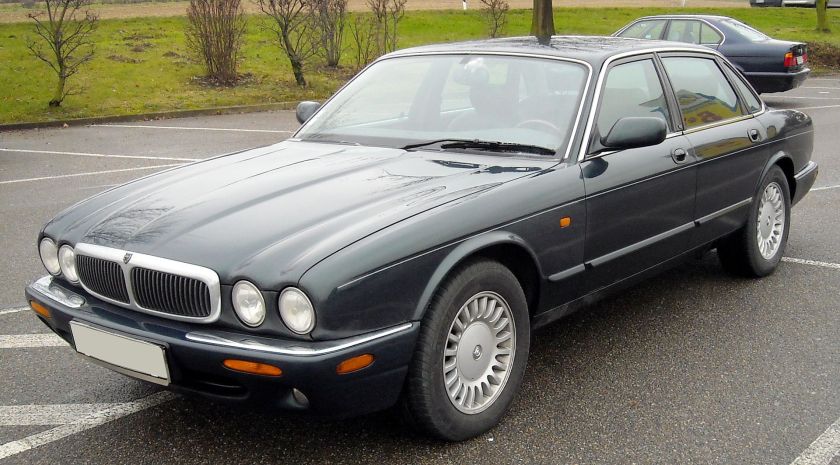
A Sovereign variant
|
|
| Overview | |
| Manufacturer | Jaguar Cars |
| Also called | Jaguar Sovereign Jaguar XJ Executive Jaguar XJ Sport Jaguar XJ8 Jaguar XJR Daimler Eight Daimler Super V8 |
| Production | September 1997—December 2002 |
| Assembly | Coventry, England |
| Designer | Geoff Lawson (1995) |
| Body and chassis | |
| Class | Luxury vehicle |
| Body style | 4-door saloon |
| Layout | FR layout |
| Powertrain | |
| Engine | 3.2 L Jaguar AJ-V8 4.0 L Jaguar AJ-V8 4.0 L supercharged Jaguar AJ-V8 |
| Transmission | 5-speed automatic ZF 5HP24
Mercedes-Benz W5A580 Mercedes-Benz 5G-Tronic transmission (Supercharged models only) 1998-2002 |
| Dimensions | |
| Wheelbase | SWB: 112 in (2,800 mm) LWB: 116 in (2,900 mm) |
| Length | SWB: 197 in (5,000 mm) LWB: 201 in (5,100 mm) |
| Width | 69 in (1,800 mm) |
| Height | SWB: 51 in (1,300 mm) LWB: 52 in (1,300 mm) |
| Curb weight | SWB: 3,968 lb (1,800 kg) LWB: 4,134 lb (1,875 kg) |
| Chronology | |
| Predecessor | Jaguar XJ (X300) |
| Successor | Jaguar XJ (X350) |
The Jaguar XJ (X308) is a luxury saloon manufactured and sold by Jaguar Cars between 1997 and 2003. It is an evolution of the outgoing X300 platform, and the exterior styling is nearly identical between the two generations. The major change was the introduction of Jaguar’s AJ-V8 as the only available engine. Like all previous XJ generations, it features the Jaguar independent rear suspension arrangement.
Exterior
The X308 kept much of the same exterior styling as its predecessor, carrying its rounded four-headlamp bonnet, low roofline, sloping tail, and wrap-around rear light clusters. From the front, the two generations can be differentiated by the shape of the indicator lenses (rectangular on the X300, oval on the X308), and also by the shape of the fog lamps and lower valance air intake (both of which are more rounded on the X308). The front and rear bumpers were both changed along with the taillights which had red/clear lenses rather than red/grey lenses. The grill surround and badging was slightly changed. The headlight fixtures also included forward parking lights housed with the brights, new to X308.
Interior
The instrument binnacle of the XJ40 and X300 was replaced on the X308 with three large, separate gauges set into recesses in the curved dashboard. Door trim and the design of the center console were also slightly revised.
Mechanicals
Having discontinued production of both the AJ16 inline-six and V12 engines, Jaguar offered only its newly designed V8 engine (named the AJ-V8.) It was available in either 3.2 L or 4.0 L form, although certain markets (such as the United States) only received cars powered by the 4.0 L version. The 4.0 L version was also supercharged in certain models.
| Engine | Power | Torque | Transmission |
|---|---|---|---|
| 3.2 L | 240 bhp (179 kW; 243 PS) | 233 lb·ft (316 N·m) | ZF 5HP24 |
| 4.0 L | 290 bhp (216 kW; 294 PS) | 290 lb·ft (390 N·m) | ZF 5HP24 |
| 4.0 L supercharged | 370 bhp (276 kW; 375 PS) | 387 lb·ft (525 N·m) | Mercedes-Benz 5G-Tronic W5A580 |
No manual gearbox or limited slip differential option were available for any models. Computer-controlled active suspension was available as a feature named “Computer Active Technology Suspension” (CATS).
Models
As with previous generations of the XJ, base models were generally not offered outside of the UK home market. Also, instead of the Daimler marque being used in certain markets, the equivalent “Vanden Plas” models were sold under the Jaguar name.
XJ8
The base XJ8 came standard with more equipment than had been fitted to entry-level XJs in the past, including leather upholstery, alloy wheels, and air conditioning. The door mirrors and door handles are body-coloured. The radiator grille, windscreen and rear window surrounds, boot lid plinth, and rain gutters were chromed, while the window frames remained matte black. Interior wood trim is walnut. Rear badging reads “XJ8”.
For the home market in September 2000, Jaguar began badging the XJ8 model as “XJ Executive”, and fitted as standard rain-sensing wipers, a CD player, cruise control, and rear parking sensors.
Sport
The Sport model was equipped only with the 3.2 L normally aspirated engine, and, in 2002-2003 in the American market with a 4.0 L normally aspirated V8. It offered stiffer suspension, sportier seating and interior colour combinations, and wider/larger wheels than the XJ8. The windscreen and rear window surrounds were painted matte black, as were the rain gutters and window frames for European markets (the US retains chrome surrounds). The radiator grille has metallic grey vertical slats. Rather than a chrome radiator grille surround, the Sport uses a body-coloured surround. Rear badging reads “XJ Sport”.
Sovereign
As with previous “Sovereign” XJ models, this was marketed to those customers who wanted traditional Jaguar luxury features and was essentially “built for comfort”. The interior is trimmed with burl walnut. All the exterior trim is chromed (including window frames, rain gutters, light cluster surrounds, radiator grille surround, and boot lid plinth.) Rear badging reads “Sovereign”.
Jaguar also released a long wheelbase version of the Sovereign in 1998. The only differences were with this variant was that the rear end of the car was approximately four inches longer than its original Sovereign counterpart and came with a 5-high speed gearbox.
XJR
The XJR is powered by the supercharged version of the 4.0 L V8. It is also equipped with sport suspension, wider wheels and tires, and matte-black exterior window trim (except in the US market, where the XJR was given chrome window frames and rain gutters.) Like the Sport model, the XJR has a body-coloured radiator grille surround, but with a stainless-steel mesh insert rather than the normal vanes. Other exterior touches include the “XJR” rear badging and larger exhaust outlets.
Available on late XJR models was an “R1″ performance option. This included 18” BBS wheels, larger Brembo brakes with cross-drilled rotors, and re-tuned suspension.
The XJR was capable of reaching 60 mph (97 km/h) from a standstill in 5 seconds, with an electronically limited top speed of 155 mph (249 km/h).
In 2001, to commemorate the 100th anniversary of Sir William Lyons‘ birth, Jaguar produced five hundred examples of a special-edition model named the “XJR 100”. Only available in the Anthracite exterior color with charcoal leather upholstery, the interior is trimmed with contrasting red stitching and birdseye maple. It is fitted with a leather-covered sports steering wheel and MOMO shift knob. The XJR 100 uses the Brembo brakes otherwise found on the R1-equipped XJR, plus 19″ “Montreal”-style wheels manufactured by BBS.
SE
Produced only in 2002, the SE (Special Equipment) model was fitted with more equipment than the original base model, and was offered at a competitive price. The rear badging read “SE”, and the cars were fitted with reverse parking sensors as standard.[15]
Daimler/Vanden Plas
The top-of-the-range Daimler marque (sold as the Vanden Plas model in certain markets like the United States) features softer suspension and all available luxury features. They are cosmetically differentiated by the traditional Daimler fluted radiator grille surround and fluted boot-lid plinth.
The Daimler and Vanden Plas cars were also available with the supercharged engine otherwise found only in the XJR. This model was named the Daimler Super V8. In the US market, this combination was available only as a special order though 2001 (with these cars identifiable by their “Vanden Plas Supercharged” rear badging). For US model years 2002 and 2003, the equivalent Super V8 model was then offered. These Supercharged long-wheelbase variants were also fitted with Jaguar’s Proprietary “Computer Active Technology Syetem” (CATS) adaptive suspension. The “Sports” setup from the XJR application, however, is replaced by a “touring” set-up, exclusive to supercharged Daimler and Vanden Plas variants. It is softer and more compliant than the XJR’s Computer Adaptive Technology Suspension system.
Production numbers
| Model | Production |
|---|---|
| XJ8 3.2 | 20,235 (including Executive and SE) |
| XJ8 3.2 (LWB) | 771 |
| XJ8 3.2 Sovereign | 2,095 |
| XJ8 3.2 Sovereign (LWB) | 385 |
| Sport | 1,108 |
| XJ8 3.2 Executive | |
| XJ8 3.2 SE | |
| XJ8 4.0 | 8,369 |
| XJ8 4.0 (LWB) | 148 |
| XJ8 4.0 Sovereign | 36,635 (including SE) |
| XJ8 4.0 Sovereign (LWB) | 11,566 |
| XJ8 4.0 SE | |
| XJR | 15,203 |
| XJR 100 | 500 |
| 4.0 Vanden Plas (SWB) | 1 |
| 4.0 Vanden Plas (LWB) | 21,080 |
| 4.0 Vanden Plas Supercharged | 788 |
| Daimler Eight (SWB) | 164 |
| Daimler Eight (LWB) | 2,119 |
| Daimler Super V8 (SWB) | 76 |
| Daimler Super V8 (LWB) | 2,387 |
| Total | 126,260 |
Jaguar XJ (X350)
| Jaguar XJ (X350) | |
|---|---|
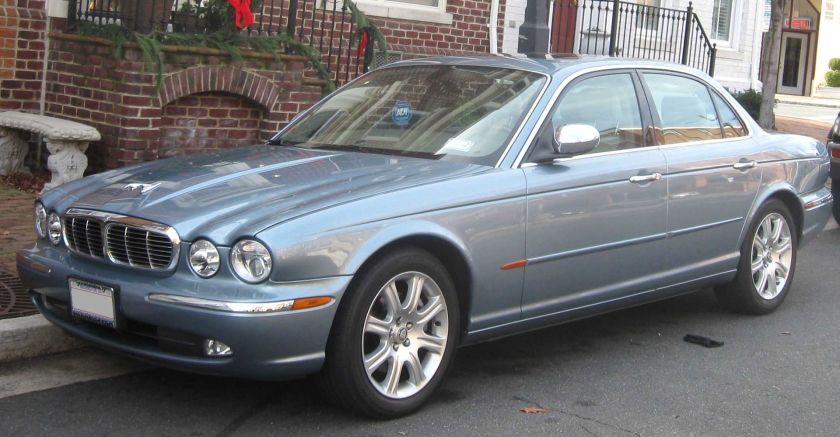 |
|
| Overview | |
| Manufacturer | Jaguar Cars |
| Also called | XJ6, XJ8, Vanden Plas, XJR, Super V8, Daimler Super Eight |
| Production | 2003-2007 |
| Assembly | Birmingham, England |
| Designer | Geoff Lawson; Ian Callum (1998, 1999) |
| Body and chassis | |
| Class | Luxury vehicle |
| Body style | 4-door saloon |
| Layout | FR layout |
| Powertrain | |
| Engine | petrol 3.0 V6 3.5 V8 4.2 V8 4.2 S/C V8 diesel 2.7 V6 |
| Transmission | 6-speed automatic |
| Dimensions | |
| Wheelbase | SWB: 119.4 in (3,033 mm) LWB: 124.4 in (3,160 mm) |
| Length | SWB: 200.4 in (5,090 mm) LWB: 205.3 in (5,215 mm) |
| Width | 2004-05: 73.2 in (1,859 mm) 2006-07: 83.0 in (2,108 mm) |
| Height | SWB: 57 in (1,448 mm) LWB: 57.3 in (1,455 mm) |
| Kerb weight | 3,946 lb (1,790 kg) |
| Chronology | |
| Predecessor | Jaguar XJ (X308) |
The third-generation Jaguar XJ (X350) (2003–2007) was a luxury car from Jaguar Cars, introduced in 2003 as the successor of the XJ (X308), and was facelifted as the XJ (X358) in 2007. While the car’s exterior and interior styling were traditional in appearance, the car was completely re-engineered. The new car also saw the return of the fabled XJ6 badge, and with it six-cylinder power, albeit in a V-configuration. It was only equipped with automatic transmission, like most Jaguars.
X350
Specifications
Design and engineering
Like the Audi A8, the X350’s chassis and body were constructed from aluminium. While some steel was used in places throughout the chassis, the X350 has a stressed aluminium monocoque/chassis similar in general design to a conventional steel structure, but with two differences; its underbody components are bonded together with aerospace-grade epoxy adhesives while around 3,200 self-piercing rivets are used to create the new XJ’s unibody.
This differs from the A8’s construction which uses an aluminium spaceframe to which aluminium panels are then attached. However, the aluminium Audi A8 weighs a comparatively high 1,830 kg (4,030 lb) (3.0 V6 TDi) compared to 1,539 kg (3,393 lb) of the (3.0 V6) XJ. On its own, the current XJ’s bodyshell weighs about the same as a contemporary Mini Hatch. If the car were made of steel, it was estimated that it would weigh 40% more.
The new structure, and the need to continually improve the car’s ride and handling, dictated a number of other mechanical changes. The third generation of Jaguar’s rear suspension changed from the previousdouble wishbone layout in favour of a more sophisticated multi-link arrangement. In addition the car has all round adaptive air suspension, just like the Audi A8.
Some of the styling features that distinguish the X350 from the previous XJ include the outer headlights, which are larger than the inner headlights, and wheels which are moved out further towards the corners of the car, both like the original Mark 1 XJ. The car is wider, longer, and higher than the previous model with greatly increased interior space. Also, the X350 dispenses with the separate “sixthlight” rear side window of its predecessor, reverting to two side windows with quarterlight glasses mounted in the rear doors, like the Mark 1. Moreover, beginning in 2004, changes were made to the distinctive chrome side window frames of the XJ, where the use of chrome in the areas in between the front and back doors has been discontinued, in effect hiding the B-pillars. The curve in the rear door and rear screen resembles that of the Jaguar saloons of the 1950s and 1960s.
The vehicle was the first Jaguar to be built using self-piercing rivets.
Engines
| Model | Type | Power, torque@rpm |
|---|---|---|
| 2.7 litre V6 diesel | 2.7 L V6 twin turbo | 204 PS (150 kW; 201 hp), 435 N·m (321 lb·ft) |
| 3.0 litre V6 petrol | 3.0 L V6 | 238 PS (175 kW; 235 hp) |
| 3.5 litre V8 petrol | 3.5 L V8 | 266 PS (196 kW; 262 hp), 345 N·m (254 lb·ft) |
| 4.2 litre V8 petrol | 4.2 L V8 | 299 PS (220 kW; 295 hp) |
| 4.2 litre V8 petrol supercharged | 4.2 L V8 supercharged | 395 PS (291 kW; 390 hp) |
The V8 engines remained in the new model, but were the revised and more powerful versions found in the 2003 S-Type. The 290 bhp 4.0 L and 370 bhp 4.0 L supercharged engines from the X308 Mk II were replaced by the S-Type’s 294 bhp (219 kW; 298 PS) 4.2 L and 400 bhp (298 kW; 406 PS) 4.2 L supercharged units respectively, while a new 3.5 L V8 was also introduced for the European market which was derived from the 4.2 L engine and produced 262 bhp (195 kW; 266 PS).
The 240 bhp (179 kW; 243 PS) 3.2 L V8 from the previous model was replaced by the 3.0 L V6 from the X-Type and S-Type. The V6 powers the XJ6, while the XJ8 was powered by a naturally aspirated V8. The XJR was powered by a supercharged 4.2 L V8. The XJ6 and the XJ TDVi are the only X350 models not sold in the Americas.
TDVi
In 2005, Jaguar introduced the diesel-powered XJ TDVi, featuring the same Ford-Peugeot-developed 2.7 litre twin-turbo V6 found in the S-Type. The engine, known as the AJD-V6, produces 204 bhp (152 kW; 207 PS) and 321 lb·ft (435 N·m) of torque, and was fitted with electronically controlled active engine mounts to minimise vibration at idle.
Daimler Super Eight/Super V8
The Super V8, also known as the Daimler Super Eight, was the most expensive model, with the XJR second. The Super V8, which debuted in the 2003 model year in the new X350 body style, was essentially a long-wheelbase, supercharged XJ8 with the more luxurious Vanden Plas, or Daimler interior. Its primary competitor was the Mercedes-Benz S55 AMG. A distinctive wire mesh grille and chrome-finished side mirrors set the Super V8 and the XJR apart from the less expensive XJ saloons. In 2005, the Super V8 model was replaced by the Daimler Super Eight in all markets other than North America. The Daimler Super Eight was essentially the same car, but with the addition of a different grille, boxwood inlays in the wood veneer and several other interior luxuries as standard. Daimler’s US equivalent was no longer known as the Vanden Plas, but the Super V8. The Vanden Plas name was used on models that would be known as Sovereign elsewhere. Daimler has been the State Car for the British Prime Minister since the 1980s.
For 2007, the premium model was the reintroduced Jaguar Sovereign when the Super V8 and Daimler versions were dropped.
North American models
All North American XJ models came standard with a 300 hp (224 kW) naturally aspirated engine. A 400 hp (298 kW) supercharged 4.2 L V8 engine was optional. The valvetrain had a dual overhead cam design with four valves per cylinder. The top speed was limited electronically to 155 mph (249 km/h).
Super V8 Portfolio
In early 2005, Jaguar announced its most exclusive and expensive XJ saloon since ceasing V12 production. Called the 2006 Super V8 Portfolio, it was a limited-edition trim level of the flagship Super V8 saloon. It debuted at the New York International Auto Show in March 2005, and was the most expensive Jaguar saloon produced to date, with a base price of US$115,995. The Portfolio features added power as well as exterior and interior enhancements, including a DVD player and 7-inch screens in the rear headrests. The Super V8 Portfolio, aimed at North American markets, became available in August 2005. It was available in only two new, limited colours: Black Cherry and Winter Gold.
The Super V8 Portfolio was powered by Jaguar’s supercharged 400 hp (300 kW), 4.2 L, 32-valve, AJ-V8 engine. Top speed was 155 mph (249 km/h) and the Portfolio has a 0 to 60 mph (0 to 97 km/h) acceleration time of under 5 seconds.
Production
The last X350 vehicle was produced in March 2009.
Facelift (X358)
| Jaguar XJ (X358) | |
|---|---|
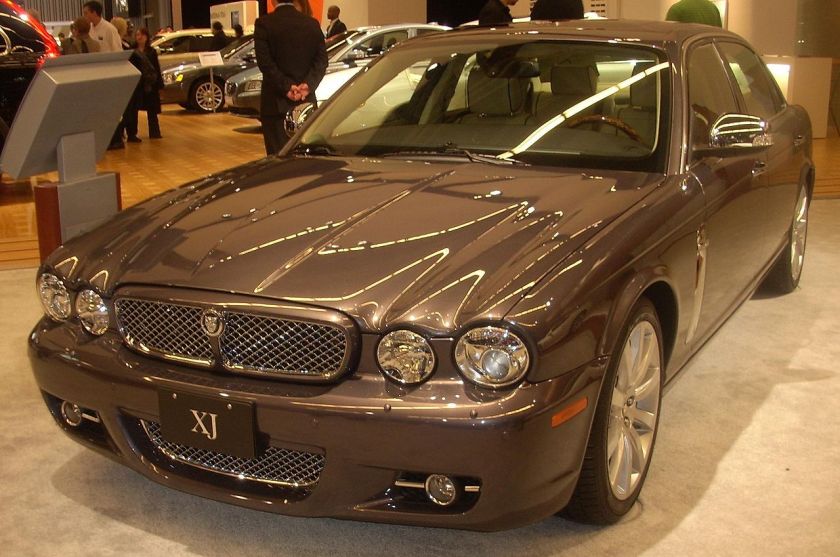 |
|
| Overview | |
| Manufacturer | Jaguar Land Rover |
| Also called | XJ8, Vanden Plas, XJR, Super V8 |
| Production | 2007–2009 |
| Assembly | Birmingham, England |
| Body and chassis | |
| Body style | 4-door saloon |
| Layout | FR layout |
| Powertrain | |
| Engine | 3.0 L AJ-V6 V6 4.2 L AJ-V8 V8 4.2 L supercharged AJ-V8 V8 2.7 L TDVi AJD-V6 V6 |
| Transmission | 6-speed automatic |
| Dimensions | |
| Wheelbase | SWB: 119.4 in (3,033 mm) LWB: 124.4 in (3,160 mm) |
| Length | SWB: 200.4 in (5,090 mm) LWB: 205.3 in (5,215 mm) |
| Width | 76.5 in (1,943 mm) |
| Height | SWB: 57 in (1,448 mm) LWB: 57.3 in (1,455 mm) |
| Kerb weight | 3,946 lb (1,790 kg) |
| Chronology | |
| Successor | Jaguar XJ (X351) |
The X350 was facelifted for the 2008 model year, a design unveiled at the end of February 2007. Jaguar gave the car a mildly revised front grille, though still of a similar design to that of the pre-facelift XJ (rather than following the contemporary design language of the Jaguar XF) while the new front bumper assembly featured a prominent lower grille. The Jaguar Logo was changed from the 3D bonnet ornament to the logo of the Jaguar face within the grille that was currently also found on the front of the XK and the XF. The front lights had detail changes while the revised door mirrors incorporated side repeaters. The front wings on all models were remodelled to feature side vents, previously the preserve of the Super V8 Portfolio (and XJR Portfolio in the UK), while the side sills, rear bumper and tail lights were revised.
The interior was only slightly changed from its predecessor, featuring re-sculptured front seats that gave additional support and more legroom in the rear, allowing rear passengers over a metre of legroom.
Specifications
Models
| Models | Executive | Sovereign | XJR | Super V8 |
|---|---|---|---|---|
| Engines | 2.7D, 3.0, 4.2 | 2.7D, 3.0, 4.2 | 4.2 Supercharged | 4.2 Supercharged |
| Wheelbase | short, long(optional) | short, long (optional) | short | short, long (optional) |
| Wheels (standard) | Carelia 8.5Jx19 alloy | Polaris 8.5Jx19 alloy | Carelia 8.5Jx20 alloy | Carelia 9Jx20 alloy |
UK
As of November 2007, the following XJ models were available in the UK:
- XJ 2.7D Executive
- XJ 2.7D Sport Premium
- 3.0-litre Executive
- 2.7D, 3.0-litre, and 4.2-litre Sovereign
- 4.2-litre supercharged XJR
- Daimler Super Eight
These models with the 2.7-litre diesel engine or with the 3.0-litre petrol V6 engine are also known as the XJ6 (since the engines have six cylinders), while the 4.2-litre eight-cylinder petrol engine mounted in the Sovereign results in that model being known as the XJ8. Also notice that the model list for the UK does not include the 3.5-litre V8 engine available in Germany, for example.
Germany
From May 2007, the following models were available in Germany:
- XJ6 2.7 litre Diesel Classic
- XJ6 2.7 litre Diesel Executive
- XJ6 3 litre Executive
- XJ8 3.5 litre Executive
- XJ8 4.2 litre Executive
- XJ6 2.7 litre Diesel Sovereign
- XJ8 3.5 litre Sovereign
- XJ8 4.2 litre Sovereign
- XJR 4.2 litre V8 Kompressor (i.e. the supercharged V8 variant)
- Daimler Super Eight
USA
From May 2007, the following XJ models were available in the US:
- XJ8
- XJ8L
- XJ Vanden Plas (this model was equivalent to ‘Daimler’ in Europe; the name ‘Daimler’ was not used by Jaguar in the US)
- XJR
- XJ Super V8
Notice: the XJ6 and the XJ 2.7D are not available in the US, unlike in Europe. The ‘L’ on the XJ8L badge denotes the long-wheelbase version.
Engines
| Model | Type (displacement, bore x stroke) | power, torque@rpm | acceleration (0–100 km/h) (s) | top speed |
|---|---|---|---|---|
| 2.7 litre V6 diesel | 2,720 cc (2.72 L; 166 cu in) twin turbo V6, 81 mm (3.2 in)x88 mm (3.5 in) | 207 PS (152 kW; 204 hp) @ 4,000, 435 N·m (321 lb·ft) @ 1,900 | 8.2 | 225 km/h (140 mph) |
| 3.0 litre V6 petrol | 2,967 cc (2.967 L; 181.1 cu in) V6, 89 mm (3.5 in)x79.5 mm (3.13 in) | 235 PS (173 kW; 232 hp) @ 6,800, 293 N·m (216 lb·ft) @ 4,100 | 8.1 | 233 km/h (145 mph) |
| 4.2 litre V8 petrol | 4,196 cc (4.196 L; 256.1 cu in) V8, 86 mm (3.4 in)x90.3 mm (3.56 in) | 298 PS (219 kW; 294 hp) @ 6,000, 303 N·m (223 lb·ft) @ 4,100 | 6.6 | 250 km/h (160 mph) |
| 4.2 litre V8 petrol Supercharged | 4,196 cc (4.196 L; 256.1 cu in) V8 supercharged, 86 mm (3.4 in)x90.3 mm (3.56 in) | 395 PS (291 kW; 390 hp) @ 6,100, 541 N·m (399 lb·ft) @ 3,500 | 5.3 | 250 km/h (160 mph) |
Transmission
All models use the same ZF six-speed automatic transmission, XJ6 petrol versions have a lower final drive ratio.
In popular culture
The Jaguar X350 (a facelifted X358) featured in an episode of BBC 2‘s Top Gear, where it drove from Basel to Blackpool Tower on one tank of fuel. Despite the 650-mile (1,050 km) pre-defined range, Jeremy Clarkson, who was driving the car at the time, had actually driven 800 miles (1,300 km), and after examining the tank, had enough fuel to do another 120 miles (190 km), making its range about 1,000 miles (1,600 km). Clarkson then described the car as “astonishing” and “the second most economical car in the world”, finishing just after Richard Hammond in a Polo.
Compact executive
- 1935–1949 1½ Litre saloon
- 1955–1959 Mark 1
1955-1959 Jaguar Mark 1
| Jaguar Mark 1 | |
|---|---|
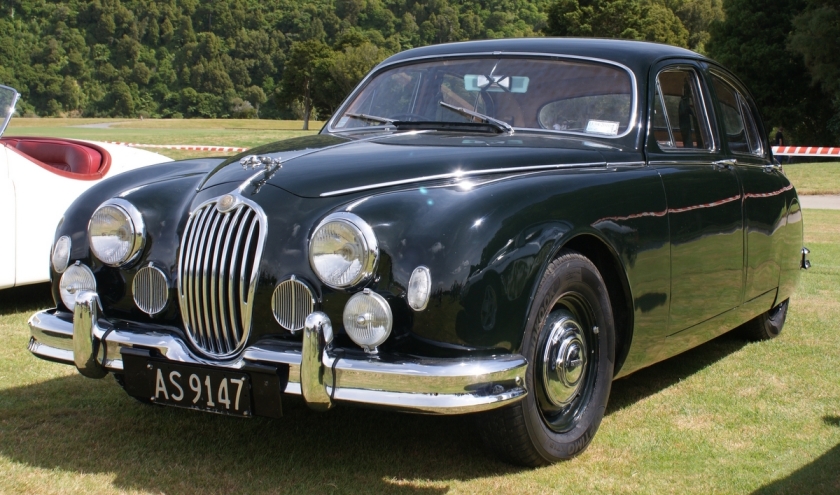
Jaguar 2.4 Litre Special Equipment early 1957
|
|
| Overview | |
| Manufacturer | Jaguar Cars |
| Production |
|
| Body and chassis | |
| Body style | Saloon |
| Powertrain | |
| Engine | 2,483 cc XK I6 3,442 cc XK I6 |
| Transmission | 4-speed manual 4-speed manual + overdrive 3-speed automatic |
| Dimensions | |
| Wheelbase | 107.5 in (2,730 mm) |
| Length | 181 in (4,597 mm) |
| Width | 66.75 in (1,695 mm) |
| Height | 57.25 in (1,454 mm) |
| Chronology | |
| Predecessor | Jaguar 2½ Litre saloon |
| Successor | Jaguar Mark 2 |
The Jaguar Mark 1 is a British saloon car produced by Jaguar between 1955 and 1959. Referred to in contemporary company documentation as the Jaguar 2.4 Litre and Jaguar 3.4 Litre, the word “Saloon” was often added. The designation “Mark 1” was included retrospectively upon its replacement by the Mark 2 in October 1959. The 2.4 Litre was the company’s first small saloon since the demise of its 1½ and 2½ Litre cars in 1949, and was an immediate success, easily outselling the larger Jaguar saloons.
The 2.4 Litre saloon was announced on 28 September 1955. The 3.4 Litre saloon announced 17 months later in USA on 26 February 1957 was designed for the American market and was not at first freely available on the domestic market.
History
In 1951 Jaguar relocated to Daimler’s Browns Lane plant which provided not merely sufficient production capacity for their existing range, but enabled them to move into the middle-weight executive saloon sector, then occupied in the UK by cars such as the stately Humbers, the bulbous Standard Vanguard and the heavy Rover P4. Jaguar’s new 2.4 and 3.4 introduced a modern style and a new level of performance to this respectable company.
Although having a family resemblance to the larger Mark VII, the Mark I differed in many ways. Most importantly, it was the first Jaguar with unitary construction of body and chassis. The independent front suspension featured double wishbones, coil springs, telescopic dampers, and an anti-roll bar, all carried in a separate subframe mounted to the body by rubber bushes (with only minor revisions, this system was used on subsequent Jaguar saloons including early versions of the XJ). The live rear axle used a simplified version of the D-Type suspension, with inverted semi-elliptic springs cantilevered into the main body frame with the rear quarter section carrying the axle and acting as trailing arms. Transverse location was secured by a Panhard rod, the system being a significant improvement over other contemporary Jaguar saloons and sports cars (the reason for the unusual inverted leaf spring arrangement was the same as for the D-Type, to transfer all rear axle loads forward to the unitary body shell. The rear of the car was unstressed). The rear wheel track was some 4.5 in (114 mm) narrower than the front track and looked peculiar from behind, a feature that was blamed (probably incorrectly) for excessive understeer at low speed. It was reported to be better balanced at higher speeds – indeed, the narrower track was deemed to assist high speed straight-line stability and was a feature incorporated in many record-breaking cars of pre and post-War design. Nevertheless, it is probable that the narrower rear track was occasioned by the lack of a suitably dimensioned component from Salisbury, the axle manufacturer.
The interior was of similar design to the contemporary Jaguar saloons and sports cars, with most of the dials and switches being located on the central dashboard between the driver and passenger. This arrangement reduced the differences between LHD and RHD versions.
Although its profile was very different from that of previous Jaguars, the side window surrounds and opening rear “no draught ventilator” (quarterlight) windows are reminiscent of Jaguar Mark IV saloons.
At launch the car had 11.125 in (283 mm) drum brakes but from the end of 1957 got the innovative (at the time) option of disc brakes on all four wheels.
The car was available in Standard or Special Equipment versions with the former lacking rev counter, heater (available as an option), windscreen washers, fog lights and cigarette lighter. Both versions did however have leather upholstery and polished walnut trim.
3.4 Litre engine
The Mark 1 was initially offered with a 2.4 Litre short-stroke version of the XK120’s twin-cam six-cylinder engine, rated at 112 bhp gross, but from February 1957 the larger and heavier 3.4 Litre 210 bhp unit already used in the Jaguar Mark VIII also became available, largely in response to pressure from US Jaguar dealers. Wire wheels became available. The 3.4 had a larger front grille for better cooling, a stronger rear axle, and rear-wheel covers (spats) were cut away to accommodate the wire wheels’ knock-off hubcaps. The 2.4 Litre was also given the larger grille. After 200 cars had been built and sent to USA and just prior to the car’s announcement a major factory fire destroyed 3.4 Litre production facilities. See also Jaguar XKSS.
In September 1957 a three-speed Borg-Warner automatic transmission previously an export-only option became available with either engine and Dunlop disc brakes for all four wheels were made available as an optional extra on all Jaguar models except the Mark VIII saloon. 19,992 of the 2.4 and 17,405 of the 3.4 Litre versions were made.
Performance
A 2.4 Litre saloon with overdrive was tested by the British magazine The Motor in 1956. It was found to have a top speed of 101.5 mph (163.3 km/h) and could accelerate from 0–60 mph (97 km/h) in 14.4 seconds. A fuel consumption of 18.25 miles per imperial gallon (15.48 L/100 km; 15.20 mpg-US) was recorded. The test car cost £1532 including taxes.
They went on to test a 3.4 Litre automatic saloon in 1957. This car had a top speed of 119.8 mph (192.8 km/h), acceleration from 0-60 mph (97 km/h) in 11.2 seconds and a fuel consumption of 21.1 miles per imperial gallon (13.4 L/100 km; 17.6 mpg-US) was recorded. The test car cost £1864 including taxes of £622.
A manual overdrive version of the 3.4 Litre was tested by The Autocar in June 1958. Its 0–60 mph (97 km/h) time was 9.1 seconds, and 0–100 mph (160 km/h) in 26 seconds, little more than a second behind the contemporary XK150 with the same engine.
Racing
Mark I 3.4 Litre saloons competed successfully in many rallies, touring car, and saloon car races, notable drivers including Stirling Moss, Mike Hawthorn, Tommy Sopwith, and Roy Salvadori.
In Australia, David McKay won the 1960 Australian Touring Car Championship at the wheel of a 3.4 Litre “Mark 1” and Bill Pitt won the 1961 Australian Touring Car Championship driving the same model.
Mike Hawthorn
The Jaguar Mark I gained a certain notoriety when on 22 January 1959 former motor racing world champion Mike Hawthorn died in an accident involving his own highly-tuned 1957 3.4 Litre, registration VDU 881, on the A3 Guildford By-Pass in Surrey, England.
- 1959–1967 Mark 2
Jaguar Mark 2
| Jaguar Mark 2, 240 and 340 | |
|---|---|
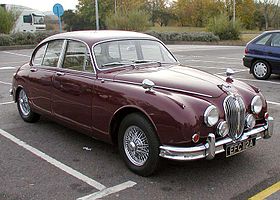
Jaguar Mark 2 3.4 Litre, first registered 1963
|
|
| Overview | |
| Manufacturer | Jaguar Cars |
| Also called | Jaguar 240 & Jaguar 340 (from September 1967) Jaguar 3.8 Sedan (US market) |
| Production | 1959–1967 83,976 (Mark 2) 1967–1969 7,234 (240 & 340) |
| Assembly | Coventry, England |
| Body and chassis | |
| Class | Sports saloon |
| Body style | 4-door saloon |
| Layout | FR layout |
| Related | Daimler 2.5-V8 / V8-250 Jaguar S-Type Jaguar 420 |
| Powertrain | |
| Engine | 2,483 cc (2.5 L) XK I6 3,442 cc (3.4 L) XK I6 3,781 cc (3.8 L) XK I6 (until 1966) |
| Dimensions | |
| Wheelbase | 107 in (2,718 mm) |
| Length | 180 in (4,572 mm) |
| Width | 67 in (1,702 mm) |
| Height | 58 in (1,473 mm) |
| Kerb weight | 3,174 lb (1,440 kg) 2.4 manual without overdrive |
| Chronology | |
| Predecessor | Jaguar Mark 1 |
| Successor | not replaced, Jaguar XJ6 |
The Jaguar Mark 2 is a medium-sized saloon car built from late 1959 to 1967 by Jaguar in Coventry, England. Twelve months before the announcement of the XJ6 they were renamed Jaguar 240 and Jaguar 340. The previous Jaguar 2.4 Litre and 3.4 Litre models made between 1955 and 1959 have been identified as Mark 1 Jaguars since Jaguar produced this Mark 2 model.
Until the XJ, Jaguar’s postwar saloons were usually denoted by Roman Numerals (e.g. Mark VII, Mark VIII) while the Mark 2 used Arabic Numerals, denoted on the rear of the car as “MK 2”.
The XK engine
Adhering to Sir William Lyons‘ maxim of “grace, pace and space”, the Mark 2 was a fast and capable saloon. It came with a 120 bhp (89 kW; 120 PS) 2,483 cubic centimetres (152 cu in), 210 bhp (160 kW; 210 PS) 3,442 cubic centimetres (210 cu in) or 220 bhp (160 kW; 220 PS) 3,781 cubic centimetres (231 cu in) Jaguar XK engine. The 3.8 is similar to the unit used in the 3.8 E-Type (called XKE in the USA), having the same block, crank, connecting rods and pistons but different inlet manifold and carburation (two SUs versus three on the E-Type in Europe) and therefore 30 bhp (22 kW) less. The head of the six-cylinder engine in the Mark 2 had curved ports compared to the straight ports of the E-Type configuration. The 3.4 Litre and 3.8 Litre cars were fitted with twin SU HD6 carburettors and the 2.4 Litre with twin Solex carburettors.
Some explanation is required concerning the claimed bhp figures shown above. Jaguar used gross bhp figures throughout the production period of the Mk II and 240/340 models. A direct conversion into DIN bhp is not possible, but we know that the 3.8 Mk II engine developed around 190bhp DIN.This compares with the later 4.2 XJ6 engine which also gave around 190bhp DIN or 245 gross bhp, according to Jaguar, both being for 8:1 compression engines. The explanation was that the lower peak for the XJ6 4.2 engine meant that the bhp was being delivered at less rpm, for the same output.The camshaft timing and inlet and exhaust valve sizes were the same for the 2.4,3.4,3.8 Mk II and XJ6 4.2 engines, so the engines throttled themselves sooner in the bigger engine sizes. The later 4.2 XJ6 engines had special induction pipes, to reduce exhaust emissions, that crossed over between the inlet and exhaust sides of the engine, which reduced bhp to around 170bhp on later production.
Body
Compared to the Mark 1, appearance of the car was transformed by an increase of 18% in cabin glass area greatly improving vision. The car was re-engineered above the waistline, slender front pillars allowed a wider windscreen and the rear window almost wrapped around to the enlarged side windows now with the familiar Jaguar D-shape above the back door and fully chromed frames for all the side windows. The radiator grille was amended and larger side, tail and fog lamps repositioned. Inside a new heating system was fitted and ducted to the rear compartment (although still notoriously ineffective). There was an improved instrument layout that became standard for all Jaguar cars until the XJ series II of 1973.
Mechanical changes
The front suspension geometry was rearranged to raise the roll centre and the rear track widened. Four-wheel disc brakes were now standard. Power steering, overdrive or automatic transmissions could be fitted at extra cost. The 3.8 Litre was supplied fitted with a limited-slip differential.
The Mark 2 was over 100kg heavier than the 2.4 / 3.4 cars.
Daimler 2.5 V8 and V8-250
A popular luxury derivative fitted with Daimler’s own 142 bhp (106 kW; 144 PS) 2½-litre V8 it sold well from 1962 to 1967 as a Daimler 2.5 V8. In late 1967 it was re-labelled V8-250 to match Jaguar 240. As well as being significantly more powerful than the 2.4-litre XK6 the more modern Daimler engine was lighter by about 150 lb (68 kg) and also shorter which reduced the mass over the front wheels and so reduced understeer during hard cornering.
These cars were recognisable by the characteristic Daimler wavy fluting incorporated in the chrome radiator grille and rear number plate lamp cover, their smoothness and the sound of their V8 engine. They were given distinct exterior and luxury interior fittings.
240 and 340
In September 1967 the 2.4 Litre and 3.4 Litre Mark 2 cars were rebadged as the 240 and 340 respectively. The 3.8 Litre model was discontinued. The 240 and 340 were interim models intended to fill the gap until the introduction of the XJ6 in September 1968. The 340 was discontinued on the introduction of the XJ6 but the 240 continued as a budget priced model until April 1969; its price of £1364 was only £20 more than the first 2.4 in 1956.
Output of the 240 engine was increased from 120 bhp (89 kW; 120 PS) @ 5,750 r.p.m. to 133 bhp (99 kW; 135 PS) @ 5,500 r.p.m. and torque was increased. It now had a straight-port type cylinder head and twin HS6 SU carburettors with a new inlet manifold. The automatic transmission was upgraded to a Borg-Warner 35 dual drive range. Power steering by Marles Varamatic was now available on the 340. Servicing intervals were increased from 2,000 miles to 3,000 miles. There was a slight reshaping of the rear body and slimmer bumpers and over-riders were fitted. For the first time the 2.4 litre model could exceed 100 mph, resulting in a slight sales resurgence.
The economies of the new 240 and 340 models came at a cost – the leather upholstery was replaced by Ambla leather-like material and tufted carpet was used on the floor—though both had been introduced on the Mark 2 a year earlier. Other changes included the replacement of the front fog lamps with circular vents and optional fog lamps for the UK market. The sales price was reduced to compete with the Rover 2000 TC.
Production
Mark 2: 83,976 produced between 1959 and 1967, split as follows:
- 2.4 Litre – 25,173
- 3.4 Litre – 28,666
- 3.8 Litre – 30,141
240 and 340: 7,246 produced between 1967 and 1969, split as follows:
- 240 – 4,446
- 340 – 2,788
- 380 – 12 (not a standard production option)
The XJ6 was introduced in September 1968.
Performance
A 3.4 Litre with automatic transmission tested by The Motor magazine in 1961 had a top speed of 119.9 mph (193.0 km/h) and could accelerate from 0-60 mph (97 km/h) in 11.9 seconds. A touring fuel consumption of 19.0 miles per imperial gallon (14.9 L/100 km; 15.8 mpg-US) was recorded. The test car cost £1951 including taxes of £614.
A 3.8 Litre with the 220 bhp engine was capable of accelerating from 0-60 mph (97 km/h) in 8.5 seconds and could reach a top speed of 125 mph (201 km/h).
Motorsport
- Bob Jane won the 1962 Australian Touring Car Championship driving a 3.8 Litre Mark 2.
- Michael Parkes and Jimmy Blumer won the 1962 The Motor Six Hours International Saloon Car Race driving a 3.8 Litre Mark 2.
- Peter Nöcker won the 1963 European Touring Car Challenge driving a 3.8 Litre Mark 2.
- Bob Jane won the 1963 Australian Touring Car Championship driving a 3.8 Litre Mark 2 (fitted with a 4.1 litre engine).
- Roy Salvadori and Denny Hulme won the 1963 Brands Hatch 6 Hours driving a 3.8 Litre Mark 2.
Influence on modern Jaguars
The Mark 2’s body lines, derived from the Mark 1, and overall layout proved sufficiently popular over time to provide an inspiration for the Jaguar S-Type introduced in 1999.
Portrayal in media
The Mark 2 gained a reputation as a capable car among criminals and law enforcement alike; the 3.8 Litre model being particularly fast with its 220 bhp (164 kW) engine driving the car from 0-60 mph (97 km/h) in 8.5 seconds and to a top speed of 125 mph (201 km/h) with enough room for five adults. Popular as getaway cars, they were also employed by the police to patrol British motorways.
The Mark 2 is also well known as the car driven by fictional TV detective Inspector Morse played by John Thaw; Morse’s car was the version with 2.4 L engine, steel wheels and Everflex vinyl roof. In November 2005, the car used in the television series sold for more than £100,000 following a total ground-up rebuild (prior to this, in its recommissioned state in 2002 after coming out of storage, it had made £53,000 at auction – £45,000 more than an equivalent without the history). In the original novels by Colin Dexter, Morse had driven a Lancia but Thaw insisted on his character driving a British car in the television series.
In the 1987 British film Withnail and I, a light-grey Mark 2 in very poor condition serves as the main transport for the eponymous main characters’ disastrous trip to the Lake District.
- 1963–1968 S-type
Jaguar S-Type (1963)
| Jaguar S-Type (1963–68) |
|
|---|---|
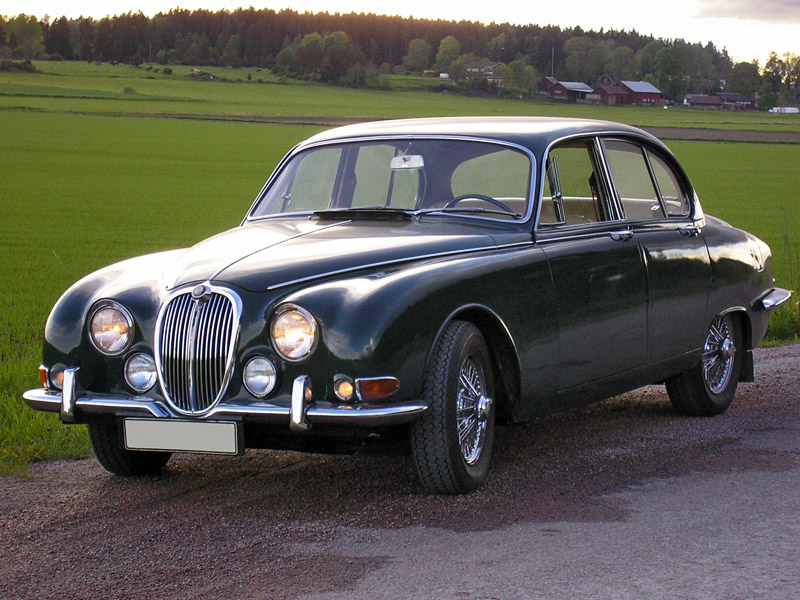 |
|
| Overview | |
| Manufacturer | Jaguar Cars |
| Production | 1963–1968 3.4-litre S-Type – 9,928 1963–1968 3.8-litre S-Type – 15,065 |
| Body and chassis | |
| Class | Sports saloon |
| Body style | 4-door saloon |
| Layout | FR layout |
| Related | Jaguar Mark X |
| Powertrain | |
| Transmission | 4-speed manual; 4-speed manual/overdrive; or 3-speed automatic options available |
| Dimensions | |
| Wheelbase | 2,730 mm (107 in) |
| Length | 4,750 mm (187 in) |
| Width | 1,683 mm (66 in) |
| Height | 1,416 mm (56 in) |
| Curb weight | 1,625 kg (3,583 lb) |
| Chronology | |
| Predecessor | Jaguar Mark 2 |
| Successor | Intended Jaguar 420 Actual Jaguar XJ6 |
The Jaguar S-Type is an automobile which was produced by Jaguar Cars in the United Kingdom from 1963 to 1968. It was a technically more sophisticated development of the Jaguar Mark 2, offering buyers a more luxurious alternative to the Mark 2 but without the size and expense of the Mark X. The S-Type sold alongside the Mark 2, as well as the Jaguar 420 following its release in 1966. The 1960s S-Type should not be confused with the retro-styled Jaguar S-Type sold from 1999 to 2008.
History
The Jaguar Mark 2 was introduced in 1959 and sold throughout most of the 1960s. It had a live rear axle and was powered by the XK six-cylinder engine first used in the Jaguar XK120 of 1948. In the Mark 2 the engine was available in 2.4, 3.4 and 3.8-litre capacities.
In 1961 Jaguar launched two new models. The full size Jaguar Mark X saloon (pronounced mark ten) used Jaguar’s new independent rear suspension and a triple SU carburettor version of the 3.8-litre XK engine. The other new car for 1961 was the Jaguar E-Type sports car, which shared the same 3.8-litre engine as the Mark X but used a scaled down version of the independent rear suspension.
Having released the Mark X, with its many technical refinements, Jaguar boss Sir William Lyons expected the Mark 2 would need updating with similar features if it was to retain its place in the market. Accordingly, work began on developing the S-Type (codenamed “Utah Mk III”, the Mark 2 having been “Utah Mk II”) as soon as development work was finished on the Mark X.
The S-Type was a major redevelopment of the Mark 2. It used a mid-scale version of the Mark X independent rear suspension to replace the Mark 2’s live rear axle and featured longer rear bodywork, among other styling and interior changes. The S-Type was available with either 3.4 or 3.8-litre XK engines but only in twin carburettor form because the triple carburettor setup would not fit into what was essentially still the Mark 2 engine bay.
By the time of the S-Type’s release in 1963, the Mark 2 remained an unexpectedly strong seller despite its age. Although the Mark X was selling less well than hoped, especially in its intended market of the USA, Sir William decided to retain all three models in the Jaguar range concurrently. The Mark X was renamed “420G” in 1966 and was joined by another new model, the 4.2-litre 420. The 420 was developed to replace the S-Type but because some demand remained for the S-Type, all four saloon models (Mark 2, S-Type, 420 and 420G) remained on sale until the arrival of the Jaguar XJ6 in 1968. The XJ6 replaced all but the 420G in the Jaguar range.
Development
engines
No new engines were developed for the S-Type. It was first released with the SU HD-8 twin-carburettor variant of the 3.8-litre XK engine, the same as that which powered the 3.8-litre Mark 2. The 3.8-litre was the only engine offered on S-Types sold into the US market.
The lower powered 3.4-litre S-Type used the same 3.4-litre engine as the Mark 2. It was released a few months after the 3.8S and was not made available at any stage on Jaguar’s press demonstrator fleet in the UK. Whereas the 3.4-litre version remained the most popular engine option for the Mark 2, the 3.8-litre S-Type outsold the 3.4 S in the ratio 3 to 2, this despite the 3.8 S being discontinued in mid-1968, a couple of months before the 3.4S.
Mechanical
Despite the S-Type’s weight gain of 152 kg (335 lb) over the Mark 2, no changes were deemed necessary to the Dunlop four-wheel disc braking system.
Major changes were made to the S-Type’s steering system. The Burman power steering system in the Mark 2, with its 4.3 turns lock-to-lock, was regarded as being excessively low geared and lacking in road feel. In the S-Type it was replaced by a higher-geared Burman unit of 3.5 turns lock-to-lock, which linked the input shaft and hydraulic valve by a torsion spring to improve its “feel”.
The heating and ventilating system of the Mark 2 was not considered adequate for the more upmarket S-Type and was replaced with an improved system. Separate control of ventilation direction was provided for both driver and front seat passenger. Warm air could also be directed to the rear passengers through an outlet situated on the propeller shaft tunnel cover between the two front seats.
Suspension
A key element of the Mark X that Jaguar wanted to include in the S-Type was its sophisticated, and by then widely acclaimed, Jaguar independent rear suspension. The suspension was a revelation at the time of its introduction, and remained the benchmark against which others were judged until the 1980s. Essentially a double wishbone setup, it uses the driveshaft as the upper wishbone. It carries the drive, braking, suspension and damping units in a single fabricated steel crossbridge, which is isolated from the bodyshell by rubber blocks. Including this suspension in the S-Type necessitated the development of a new crossbridge suitable for its 54″ track, coming as it did between the 58″ track of the Mark X and 50″ track of the E-Type.
The S-Type used the same subframe mounted, coil sprung, twin wishbone front suspension as the Mark 2.
Styling
Sir William wanted to introduce some of the Mark X’s sleeker and sharper lines into the S-Type but with limited time and money available, most effort was applied to restyling the rear bodywork. The S-Type was given extended rear bodywork similar to that on the Mark X, which also gave it a much larger boot than the Mark 2. Relatively minor changes were made to the frontal styling of the car in an attempt to balance the longer rear styling, but the overall effect at the front was still very rounded. The only change made to the centre section was to flatten and extend the rear roofline, which made the car look larger and helped to give rear seat passengers slightly more headroom.
The styling of the S-Type was regarded by many of those who worked on it as being not altogether successful. The mismatch between the horizontal lines of its rear styling and the rounded front was least flattering when viewing the car from the front quarter. This ref. quotes Cyril Crouch, Assistant Chief Body Engineer at Browns Lane during development of the S-Type, as saying “We ourselves appreciated what an ugly looking car it was, and when it came out there was a … ‘Is that the best you can do?’ sort of thing! People like myself had to take the stick for producing such an abomination! Perhaps I shouldn’t call it that, but I think everyone was very pleased to see the end of the S and move on to the 420. It seemed an odd-looking vehicle.”
The reasonable sales success of the S-Type prior to the release of the Jaguar 420 suggests that not everyone was as offended by its styling as Mr Crouch. Nevertheless, the 420 did “finish the job” in a styling sense by adding to the car a squarer, four-headlamp front end more like that of the Mark X.
Among the significant styling changes between the Mark II and the S-Type were: the tail was extended, with styling features similar to the Mark X, but scaled down; the Mark 2’s spats over the rear wheels were deleted and the rear guards reshaped and brought lower over the wheels; new slimline bumpers were used front and rear, the front bumper still featuring a dip to reveal the full depth of the radiator grille; wraparound indicators and low mounted sidelights were added at the bottoms of the front wings; the foglamps were recessed more deeply into the wing fronts; the grille was given a thicker surround and centre bar; the headlamps were given a small peak, making the car look longer and thus going some way towards balancing the longer tail; the roofline was lowered, made flatter and extended rearwards slightly; and the rear window became larger and more upright.
Bodyshell
Starting with the Mark 2’s unitary bodyshell, Jaguar’s engineers had to alter it to accommodate the independent rear suspension’s extra bulk and weight and to extend the rear bodywork. Structural changes at the front were minimal and no changes at all were made to the inner scuttle, windscreen or dashboard structure.
Among the significant structural differences between the Mark 2 and S-Type are: the reprofiled roof line resulted in the B-pillar being approximately 1″ (25.4 mm) lower and the rear window aperture being larger and more upright; the Mark 2’s underbody reinforcing rails were extended to the rear of the car and enclosed, sweeping up and over the space for the rear suspension assembly; the boot floor was double-skinned and ribbed for additional strength; the spare wheel well was relocated centrally in the boot floor (it was on the right in the Mark 2); the lid of the new longer boot (trunk) was secured by two catches rather than the single catch of the Mark 2; the 12-gallon (14 US gal) fuel tank was removed from under the boot floor and replaced by two 7-gallon (approx. 8 US gal) tanks, one inside each rear wing; new front wings were made to carry the frontal styling changes listed above; new attachment points were made for the new wings and bumpers; and new wheelarches were made to match the new front guards and rear structure.
Interior
The S-Type’s interior again reflected the styling of the Mark X but included features particular to the S-Type. Changes to the rear seat accommodation gave the impression of far greater room than in the rear of a Mark 2 and changes to the front of the cabin also gave the impression of greater luxury.
Interior differences between the Mark 2 and S-Type included a scaled down Mark X Burled Belgian walnut veneer dashboard with a burled walnut pull-out drinks tray below the centre section, the veneer extending to the dashboard centre section, which in the Mark 2 had been covered with black vinyl; a full width parcel tray was fitted below the dashboard; new controls were provided to go with the improved heating and ventilation system; the front seats were widened to give the appearance of being almost full width, and each was provided with an inboard armrest; the centre console was redesigned to suit the wider front seats and rear compartment heating arrangements; the door trims were given horizontal fluting; Mark X type armrests were added to the front doors along with an elasticated map pocket; the rear doors were given new armrests with a flip-top ashtray and magazine pocket; the front seats were given a new fore and aft adjustment mechanism that raised the rear of the seat as it was moved forwards; the backs of the front seats were made thinner to the benefit of rear seat passenger legroom, and the rear seat had a 50 mm (2.0 in) thinner squab and its backrest was more steeply angled, further benefitting headroom already enhanced by the slightly higher rear roofline. These changes did, however, leave longer legged rear seat passengers in a fairly uncomfortable ‘knee-high’ posture.
- Interior of a 1966 car
Performance
A contemporary road test by Autosport magazine was typical in describing the “on paper” performance of the 3.8 S-Type as slower than the 3.8-litre Mark 2 but its actual cross country performance as faster. Despite its extra weight, the S-Type’s independent rear suspension allowed it to corner faster than the Mark 2, especially on uneven surfaces. Other benefits ascribed to the rear suspension were better traction and a much smoother ride for rear seat passengers. Some enthusiasts rued the loss of the Mark 2’s “driftability” and noted that the S-Type suffered more body roll during high speed cornering but the consensus was that the S-Type provided significant improvements over the Mark 2 in roadholding, safety and ride comfort.
Car and Driver concluded its test report on a 3.8S with these words, “It can be a convenient family car, a businessman’s express, a sports coupe, and a grand tourer. The latter two classifications come particularly clear to anyone who spends much time with the car in the wet, when the sure-footedness of its all independent suspension and the Dunlop RS-5 tires makes its responsive handling an absolute revelation. The S-Type represents a great step forward for what has always been a fine automobile.” The RS-5 cross-ply tyres were soon to be replaced by much better Dunlop SP41 radials, further enhancing the car’s handling and grip.
Recorded performance figures obviously differed between testers and gearbox options but for the purposes of comparison, the following contemporary data are typical:
3.4 Mark 2 automatic
0–60 mph 10.0 sec
Max speed 118 mph (190 km/h)
3.4S manual/overdrive
0–60 mph 13.9 sec
Max speed 115 mph (185 km/h)
3.8S manual/overdrive
0–60 10.3 sec
Max speed 125 mph (201 km/h)
3.8S automatic
0–60 mph 11.5 sec
Max speed 116 mph (187 km/h)
Production developments
Several significant changes were made to the S-Type’s interior and mechanicals during its six years in production.
Of the various performance enhancing mechanical changes, most were applied to both the 3.4S and 3.8S at the same time. These were:
- In June 1964 the original Dunlop RS5 cross-ply tyres were replaced with Dunlop SP41 radials, removing the former’s tendency to squeal under hard cornering and providing higher limits of adhesion with more gradual breakaway at the limit.
- In October 1964 the brakes were given a bigger servo, requiring lower pedal pressures.
- Also in October 1964, the Moss four-speed manual gearbox with no synchromesh on first gear was replaced with Jaguar’s own all-synchromesh four-speed gearbox. Revised gear ratios improved acceleration and a more compact Laycock A-type overdrive unit was fitted (when the overdrive option was specified)
- A very few of the last S-Types built had the same Marles Varamatic variable ratio power steering that was available on the 420 and 420G.
The only production development not shared by both the 3.4S and 3.8S was that the Powr-Lok limited slip differential option ceased to be available on the 3.4S when the 1967 cost saving trim revisions were introduced.
In 1966 a dashboard switch was provided for the heated rear window, which had previously remained “on” as long as the ignition was on, leading to instances of flat batteries.
Sales performance
Though introduced in 1963, only a small number of S-Types was produced in that year. The S-Type did not manage to overtake the Mark 2’s production figures until 1965. It repeated the feat in 1966, the year in which the Jaguar 420 and its badge-engineered partner the Daimler Sovereign were introduced. In 1967 the 420/Sovereign outsold both the S-Type and the Mark 2, despite a resurgence in the latter’s sales that year. Both the Mark 2 and 420/Sovereign easily outsold the S-Type in 1967 and 1968. Sales of the S-Type in 1968, its last year of production, fell below four figures. Top seller in 1968 was actually the venerable Mark 2, potential buyers of both the S-Type and 420/Sovereign hanging back to wait for the new Jaguar XJ6.
Introduced late in 1968, the Jaguar XJ6 was slightly larger than the S-Type and 420/Sovereign and swept them both from the Jaguar range along with the Mark 2. The 420G continued to be available until 1970.
Production figures for each year of the S-Type’s life were:
1963 – 43
1964 – 7,032
1965 – 9,741
1966 – 6,260
1967 – 1,008
1968 – 909
Specifications
| Engine | Jaguar 6-cylinder in-line, iron block, alloy head |
| Capacities | 3.4 L (3442 cc) or 3.8 L (3781 cc) |
| Bore/Stroke | 3.4 L (83 mm x 106 mm) or 3.8 L (87 mm x 106 mm) |
| Valves | DOHC 2 valves per cylinder |
| Compression Ratio | 8:1 (7:1 and 9:1 optional) |
| Max. Power | 3.4 L 210 bhp (157 kW; 213 PS) @ 5500 rpm or 3.8 L 220 bhp (164 kW; 223 PS) @ 5500 rpm |
| Max. Torque | 3.4 L 216 lb·ft (293 N·m) @ 3000 rpm or 3.8 L 240 lb·ft (325 N·m) @ 3000 rpm |
| Carburettors | Twin SU HD6 (1.75 in) |
| Suspension | Front independent, with wishbones, coil springs with telescopic dampers and anti-roll barRear independent, with lower wishbone and driveshaft as upper link, radius arms and twin coil springs with telescopic dampers |
| Steering | Recirculating ball, worm and nut; power assistance optional |
| Brakes | Servo assisted discs on all four wheels, inboard at rear |
| Body/Chassis | Monocoque bodyshell with bolted front subframe, five-seater saloon, front-engine rear-wheel drive |
| Tyres/Wheels | 6.40 x 15 crossply or 185 x 15 radial, 5.0in rim, five-stud disc wheels with wire spoke optional |
| Track | Front=1,403 mm (55 in) Rear=1,378 mm (54 in) |
Scale Models
The S-type was modelled by Spot-on in the 1960s.
Neo Scale Models currently produce a 1:43 resin moulded model of the 3.4 S-Type.
- 1966–1968 420
Jaguar 420 and Daimler Sovereign (1966–69)
| Jaguar 420 and Daimler Sovereign (1966–69) |
|
|---|---|

1968 Jaguar 420 (left) and 1967 Daimler Sovereign (right)
|
|
| Overview | |
| Manufacturer | Jaguar Cars |
| Production | 1966–68 Jaguar 420: 10,236 1966–69 Daimler Sovereign: 5,824 |
| Body and chassis | |
| Class | Sports saloon |
| Body style | 4-door saloon |
| Layout | FR layout |
| Related | Jaguar Mark 2 Jaguar Mark X |
| Powertrain | |
| Engine | 4.2 L XK I6 |
| Transmission | 4-speed manual (Jag only); 4-speed manual/overdrive; or 3-speed automatic options available |
| Dimensions | |
| Wheelbase | 2,727 mm (107 in) |
| Length | 4,762 mm (187 in) |
| Width | 1,702 mm (67 in) |
| Height | 1,429 mm (56 in) |
| Curb weight | 1,676 kg (3,695 lb) |
| Chronology | |
| Predecessor | Jaguar S-Type |
| Successor | Jaguar XJ6 |
The Jaguar 420 (pronounced “four-twenty”) and its Daimler Sovereign equivalent were introduced at the October 1966 London Motor Show and produced for two years as the ultimate expression of a series of “compact sporting saloons” offered by Jaguar throughout that decade, all of which shared the same wheelbase. Developed from the Jaguar S-Type, the 420 cost around £200 more than that model and effectively ended buyer interest in it, although the S-Type continued to be sold alongside the 420/Sovereign until both were supplanted by the Jaguar XJ6 late in 1968.
Pedigree
The 420/Sovereign traces its origins back to the Jaguar Mark 2, which was introduced in 1959 and sold through most of the 1960s. The Mark 2 had a live rear axle and was powered by the XK six-cylinder engine first used in the Jaguar XK120 of 1948. The Mark 2 was available in 2.4, 3.4 and 3.8-litre engine capacities.
In 1961 Jaguar launched two new models with the triple SU carburettor version of the 3.8-litre XK engine: the Mark X (pronounced “mark ten”) saloon and the E-Type sports car. Both cars used versions of Jaguar’s new independent rear suspension, the Mark X having a 58-inch (1,500 mm) track and the E-Type a 50-inch (1,300 mm) track. In 1965 the Mark X and E-Type were updated with a new 4.2-litre version of the XK engine, still using triple carburettors.
Meanwhile, in 1963 Jaguar had introduced the Jaguar S-Type as a development of the Mark 2. It used a new intermediate-width, 54-inch (1,400 mm) version of the independent rear suspension in place of the live rear axle of the Mark 2. Other differences from the Mark 2 were extended rear bodywork to provide for a larger boot, a changed roofline for more rear seat passenger headroom, a slightly plusher interior and detail differences around the nose. The S-Type was available with either 3.4 or 3.8-litre XK engines (only 3.8-litre in USA) but in twin-carburettor form because the triple-carburettor setup would not readily fit into what was essentially still the Mark 2 engine bay.
James Taylor suggests four reasons why Jaguar boss Sir William Lyons might have decided to add yet another model to an already extensive Jaguar range:
- sales of the Mark X were disappointing; the car was widely seen as being too big and cumbersome and a smaller car with similar standards of technical sophistication and luxury he thought could be more successful
- demands for more luxurious features would add weight to any future models, forcing the drive towards a 4.2-litre-engined compact saloon
- a combination of the 4.2-litre engine with the compact saloon body was expected to have market appeal
- aesthetic objections to the controversially styled S-Type were known to be harming its sales
Consequently, Sir William initiated development of a new saloon based on the S-Type, retaining its 54-inch independent rear suspension but adding a twin-carburettor version of the 4.2-litre powerplant and frontal styling more akin to that of the Mark X. The new car was released in August 1966 in the form of two badge-engineered models, the Jaguar 420 and the Daimler Sovereign.
Progress
Styling
The starting point for design of the 420/Sovereign was the Jaguar S-Type, which had been in production since 1963 but whose styling had never met with universal acceptance.
In styling terms, the 420/Sovereign was essentially an S-Type with that car’s curvaceous nose made much more linear, the better to match its rear styling (which was not altered). Contouring around its four lamps was relatively subtle, with small peaks over each, and its flat frontage sloped forward slightly. The square grille with central divider matched that of the 420G, (which was the new name given to the Mark X at the time of the 420/Sovereign’s release). The low-set fog lamps of the Mark 2 and S-Type were replaced by a pair of inner headlamps at the same level as the main headlamps. The inner lamps were lit on main beam only. Dummy horn grilles were added below each inner headlamp to break up what would otherwise have been a large expanse of flat metal on either side of the radiator grille. The tops of the front wheel arches were flattened to match the squarer lines of the nose. The slimline bumpers dispensed with the centre dip which had characterised the bumpers of the Mark 2 and S-Type. All this was done to improve the car’s aesthetic balance compared with the S-Type and to create a family resemblance to the Mark X/420G, changes which Sir William could not afford (in either time or money) when the S-Type was designed. No attempt was made to give the 420/Sovereign the same front-hinged bonnet as the Mark X/420G and it retained a rear-hinged bonnet of similar dimensions to those of the S-Type and Mark 2.
Interior
Changes to the S-Type’s interior to create the 420/Sovereign were driven mainly by safety considerations, with the wood cappings on the doors and dashboard replaced with padded Rexine and a wooden garnish rail on the tops of the door linings. The clock was relocated from the tachometer to the centre of the dashboard top rail, where it was powered by its own battery. The S-Type’s pull out map tray below the central instrument panel was not carried over although the 420 retained the same central console and under-dash parcel tray. The seats of the 420 were of slightly different proportions from the S-Type, although they appeared very similar.
Engine
The 4.2-litre XK engine of the 420/Sovereign was fitted with the straight port cylinder head and 3/8-inch lift cams. Compression ratios of 7:1, 8:1 and 9:1 could be specified according to local fuel quality, the difference being obtained by varying the crown design of the pistons. The engine was fed by just two carburettors and developed a claimed 245 bhp (183 kW; 248 PS) gross at 5,500 rpm, which was 20 bhp (15 kW; 20 PS) less than the triple-carburettor version in the 420G and E-Type. The maximum torque of the engine at 283 lb·ft (384 N·m) was virtually the same as that of the triple-carburettor version yet was achieved at 3,750 rpm rather than 4,000 rpm.
The factory-quoted horsepower rating of 245 bhp (183 kW; 248 PS) was measured using the SAE (gross) system current in the USA at the time the 420/Sovereign was sold there. The SAE (gross) system excluded many accessory drives and often used non-standard induction and exhaust systems and so was replaced by the more accurate SAE (net) system in 1972, long after the 420/Sovereign had gone out of production. Reference states that the DIN horsepower rating of the 1977 USA specification 4.2-litre Series II XJ6 was equivalent to 180 bhp. The DIN system yields horsepower ratings which, for most technical purposes, are the same as those that would be obtained using the SAE (net) system. However, the 1977 test would have included power-sapping emissions equipment not present on the 420/Sovereign. Therefore, the SAE (net) power rating of the 420/Sovereign must have lain somewhere between 180 bhp and 245 bhp.
Mechanical
A novel mechanical feature that the 420/Sovereign shared with the 420G was Marles Varamatic power steering, which was offered as an option on the 420 but was standard on the Sovereign. Built by Adwest Engineering Co Ltd of Reading, England, it was a “cam and roller” system in which the non-constant pitch of the cam resulted in a variable steering ratio, with the lowest gearing being at the straight ahead, rising rapidly to either lock. The rise in gearing (equivalent to a drop in ratio from 21.6:1 to 13:1) occurred almost entirely within the first half turn of the steering wheel from the straight-ahead position. The effect was to give very light and relaxed steering at the straight ahead, with quick reaction when cornering. There was no adjustment in the behaviour of the steering in reaction to road speed. A very few of the last S-Types were similarly equipped.
Other mechanical refinements the 420/Sovereign had over the S-Type included:
- replacement of the Borg Warner Type 35 automatic transmission with the stronger Model 8
- a more efficient cross-flow radiator in place of the S-Type’s smaller vertical flow type
- a dual-line hydraulic braking system replacing the S-Type’s single line system
- twin 2-inch HD8 SU carburettors (cf. the S-Type’s twin 1.75-inch HD6 SUs)
- brake discs featuring a peripheral cast-iron anti-squeal ring
- a Holset “Torquatrol” viscous coupled engine cooling fan
- negative earthing, the S-Type was positive earth
- a pre-engaged starter instead of a Bendix pinion
- an alternator rather than the S-Type’s dynamo
Performance
Contemporary road tests indicate that the performance of the 420 and Sovereign was very highly thought of.
A Motor (UK) road test in May 1967 reported:
It seems somehow insolent to apply medium [price] standards to a saloon that for a combination of speed, comfort and safety is as good as any in the world, regardless of cost.
A North American perspective was provided by Road & Track, whose December 1967 report concluded:
Jaguar’s big seller in the U.S. remains the E-type sports cars, but the 420 sedan offers just as unique a combination of qualities in its own field. For a reasonable basic price of $5900, Jaguar offers brisk performance, outstanding braking, excellent handling and ride, quality finish, and luxury in abundance, all in an automobile that’s easy to maneuver in today’s maddening traffic.
A road test by Wheels (Australia) in August 1967 enthused:
While they can continue to build and sell cars as good as this, there is hope for the man who cares about his motoring.
In terms of performance measured under test conditions, 0–60 mph in under 10 seconds and a top speed of more than 125 mph (201 km/h) were typical. Such performance figures were superior to those of many of the 4.2-litre XJ6 models that followed. Among the few exceptions the testers took was to its 15–16mpg average fuel consumption, which even for the late 1960s was rather high. Combined with the modest size of its two 7 Imperial gallon (31.75 litre) fuel tanks, such fuel consumption gave the model a touring range of only around 250 miles (403 km).
Daimler
Daimler Sovereign engine bay
Where as the Daimler 2½-litre V8 released in 1962 differed from the Jaguar Mark 2 in having a genuine Daimler engine, only the Sovereign’s badging and aspects of interior trim differentiated it from the 420.
The market perception of the two marques Daimler and Jaguar, which the material differences between them sought to foster, was that the Daimler represented luxury motoring for the discerning and more mature gentleman whereas the Jaguar was a sporting saloon aimed at a somewhat younger clientele. In the Daimler model range, the Sovereign filled a gap between the 2½-litre V8 and the larger and more conservatively styled 4½-litre Majestic Major. Prices in the UK of the basic 420 and Sovereign, as quoted in the Motor magazine of October 1966 were:
Manual o/d – Jaguar £1615, Daimler £1724
Automatic – Jaguar £1678, Daimler £1787
In return for the ≈6.5% difference in price, the Daimler purchaser obtained only a few substantive advantages but would have considered the cachet of the Daimler badge to be well worth the extra money; indeed the Daimler name attracted buyers who disliked the Jaguar’s racier image. By the same token, rather than being unable to afford the difference for a Daimler, those who chose the Jaguar are unlikely to have regarded the Daimler as something they would wish to own anyway.
In total, the Daimler differed from the Jaguar in having:
- a plastic insert on the rear number plate housing bearing the Daimler name. On the 420 the cast number plate housing bore the Jaguar name and on the Sovereign this remained beneath the plastic “Daimler” insert
- wheel trim centres, horn button, oil filler cap and seat belt clasps carrying the stylised D rather than the title Jaguar, a Jaguar’s head or no badging at all
- ribbed camshaft covers bearing the inscription ‘Daimler’ rather than ‘Jaguar’, (although earlier versions shared the same polished alloy covers)
- all of the 420 extras as standard, including a heated rear window, overdrive on manual transmission cars and power assisted steering
- a flying D mascot at the forward edge of the bonnet in place of the ‘leaping cat’ Jaguar mascot above the radiator grille
- a fluted radiator grille with stylised D badge in place of the smooth crowned and Jaguar-badged grille
- arguably more carefully selected and matched walnut veneer trim
- higher grade Vaumol ventilated leather seat centre sections
- better quality covers for the sun visors
Differentiation
Difficulty in differentiating the 420/Sovereign from other Jaguar/Daimler models has meant that they are less well known than other Browns Lane products of the era. Even some Jaguar enthusiasts are unsure exactly where and when the 420/Sovereign fitted into the Jaguar range.
At the same time as the 420 was released, Jaguar added a chrome side strip and side repeater indicator to the Mark X and a centre bar to its grille. Along with alterations to the interior, these changes were used to justify renaming it the 420G (“G” for Grand). The Motor magazine of October 1966 referred to the 420G as “still one of the best looking large cars in the world today” and commented on the similarity of its new radiator grille to that of the 420. Given the similarity between both the names and frontal styling of the 420 and 420G, the casual observer might be forgiven for mistaking one for the other.
In 1968 the Daimler DS420 limousine began to be produced, carrying a similarly styled grille to the Sovereign and using the 4.2-litre Jaguar engine in twin carburettor form, and also undergoing final assembly at Jaguar’s Browns Lane factory in Coventry, England. Although this car was based on a modified 420G floorpan rather than that of the 420, the existence of a third Jaguar-manufactured model with “420” in its name provides further scope for confusion.
Similar confusion arises with regard to the Daimler Sovereign. From late 1969 its Series I Jaguar XJ6-based successor continued with the Daimler Sovereign name until 1983, when the “Sovereign” model name was instead applied to the high-specification version of the Jaguar (which by then was into its Series III XJ6 iteration).
Demise
In 1967, its first full year of production, the 420/Sovereign easily outsold the other Jaguar saloon models still in production (the 240 and 340 Jaguar Mark 2s, Daimler 250 V8, Jaguar S-Type and 420G) and effectively ended buyer interest in the S-Type. Nevertheless, relatively few were made in total due to the fact that the Coventry factory stopped making the Jaguar 420 in 1968, just over two years after production began and with just 10,236 produced. The Daimler Sovereign continued into 1969 and 5,824 were sold.
In 1968, 420/Sovereign sales were again well in excess of those of the S-Type and 420G but it was outsold by the resurgent Jaguar Mark 2/Daimler 250. By this time, many potential 420/Sovereign buyers were hanging back to wait for the new Jaguar XJ6. Introduced late in 1968, the XJ6 was slightly larger than the 420 and swept it from the Jaguar range along with the Mark 2 and S-Type, although the Daimler 250 remained in production into 1969 and the 420G lasted until 1970.
The decision by Sir William to base the Jaguar XJ6 on the engine, suspension and approximate dimensions of the 420/Sovereign showed his faith in the 420/Sovereign formula as the best way to rationalise the company’s saloon car range. In that way, the 420/Sovereign became a victim of its own success.
The Jaguar 420 ceased production at Browns Lane in September 1968 and the Daimler Sovereign in July 1969, although CKD (“completely knocked down”) Jaguar 420 kits were supplied as late as November 1968 for assembly by Jaguar Cars South Africa Ltd.
Scale models
As yet, no diecast model of either the 420 or Sovereign has been produced.
- Airfix produced a 1/32 scale plastic kit of the 420 during the car’s production run.
- MPC models produced a 1/32 scale plastic kit of the 420 during the 1960s, kit No. 1006-100
- Neo Scale Models currently produce a 1:43 resin moulded model of the 420 and also a Sovereign version.
Specifications
| Engine | Jaguar 6-cylinder in line, iron block, alloy head |
| Capacity | 4,235 cc (258.4 cu in) |
| Bore/Stroke | 92.07 mm × 106 mm (3.6 in × 4.2 in) |
| Valves | DOHC, 2 valves per cylinder |
| Compression Ratio | 8:1 (7:1 and 9:1 optional) |
| Max. Power | 245 bhp (183 kW; 248 PS) (SAE Gross) @ 5,500 rpm |
| Max. Torque | 283 lb·ft (384 N·m) @ 3,750 rpm |
| Carburettors | Twin SU HD8 (2 in) |
| Suspension | Front independent, with wishbones, coil springs with telescopic dampers and anti-roll barRear independent, with lower wishbone and driveshaft as upper link, radius arms and twin coil springs with telescopic dampers |
| Steering | Recirculating ball, worm and nut; Varamatic power assistance optional on Jaguar (standard on Daimler) |
| Brakes | Servo assisted discs on all four wheels, inboard at rear |
| Body/Chassis | Monocoque bodyshell with bolted front subframe, five-seater saloon, front engine, rear-wheel drive |
| Tyres/Wheels | 6.40 × 15 crossply or 185 × 15 radial, 5.5 in rim, five-stud disc wheels with wire spoke optional |
| Track | Front=1,410 mm (56 in) Rear=1,384 mm (54 in) |
| Weight (dry) | 1695 kg |
Jaguar S-Type
| Jaguar S-Type | |
|---|---|
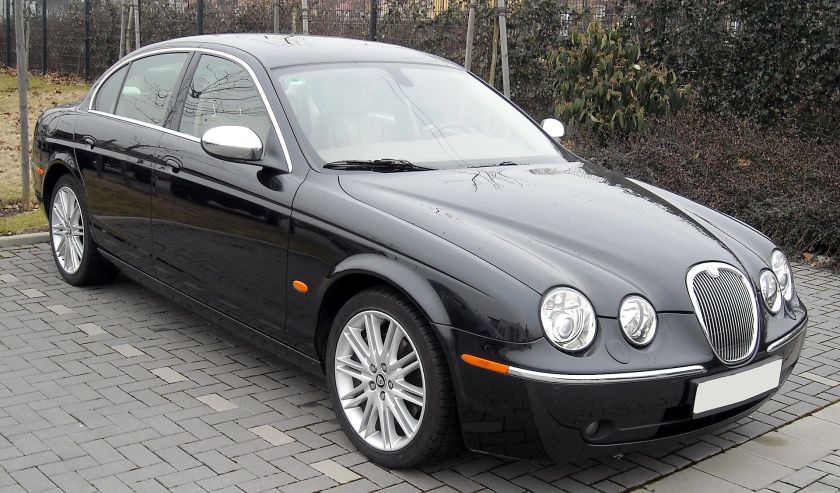
Jaguar S-Type (2004–2007)
|
|
| Overview | |
| Manufacturer | Jaguar Cars |
| Production | 1999–2008 |
| Model years | 2000-2008 |
| Assembly | Birmingham, England Taiwan (Ford Lio Ho) |
| Designer | Geoff Lawson(1995) Ian Callum (2004 Face lift) |
| Body and chassis | |
| Class | Executive car |
| Body style | 4-door saloon |
| Layout | FR layout |
| Platform | Ford DEW98 platform |
| Related | Lincoln LS |
| Powertrain | |
| Engine | petrol 2.5 V6 3.0 V6 4.0 V8 4.2 V8 4.2 S V8 diesel 2.7 V6 |
| Transmission | 5-speed manual 5-speed automatic 6-speed semi-automatic 6-speed manual |
| Dimensions | |
| Wheelbase | 114.5 in (2,908 mm) |
| Length | 2006-08: 193.1 in (4,905 mm) 2002-05: 192.0 in (4,877 mm) 2000-01: 191.3 in (4,859 mm) |
| Width | 2006-08: 81.1 in (2,060 mm) 2000-05: 71.6 in (1,819 mm) |
| Height | 2000-03: 55.7 in (1,415 mm) 2004-05: 56.0 in (1,422 mm) 2006-08: 57.0 in (1,448 mm) |
| Kerb weight | 1,800 kg (3,968 lb) |
| Chronology | |
| Successor | Jaguar XF |
The Jaguar S-Type is a model of executive car that debuted at the 1998 Birmingham Motor Show and was marketed by Jaguar for model years 1999-2008, reviving the nameplate of the company’s 1963 S-Type. The S-Type received a mild facelift for model year 2005.
Model history
Overview
The S-Type was produced at Jaguar’s Castle Bromwich facility in Birmingham, England. The car was styled by Geoff Lawson in 1995 and is based on the Jaguar DEW platform/Ford DEW platform, shared with the Lincoln LS.
The first S-Types (“X200” 1999–2002) are distinguished by a U-shaped centre console and optional touch-screen navigation system in the 2003 and later models. The traditional leaping jaguar hood ornament was optional even though it is approved by the US and EU standards and breaks away in the case of an accident. Subsequent models (“X202”, “X204”, “X206”; the last digit denoting the model year) have the Jaguar logo incorporated within the radiator grille and a more traditional ‘looped’ styling for the centre console. In Australia, the “leaper” bonnet ornament did not become available until 2004.
The supercharged S-Type R (Jaguar STR for short) joined the lineup in 2002, and the hope was that it would compete with BMW’s M5 and the Mercedes E55 AMG. The R was powered by the newly revised 4.2-Litre V8 with an Eaton M112 supercharger, producing 400 hp (300 kW; 410 PS) and could accelerate from 0 to 60 mph (97 km/h) in 5.3 seconds (0 to 100 km/h (62 mph) in 5.6 s). It included 18-inch (457-millimeter) alloy wheels, wire-mesh grille, and monochromatic paint. The R also has a rear apron, side-skirts, and front apron with built-in fog-lamps, a rear spoiler, a brace located near the rear subframe, and R badging on the boot lid and both front fenders (wings).
Later models of the S-Type R featured a revised pulley system for the Eaton M112 supercharger, allowing it to produce an extra 20 hp (15 kW; 20 PS).
Also added on the 2003 model was an electronic parking-brake paddle-switch that replaced the conventional manually operated lever for the rear brakes. For the 2003 model year, the Jaguar S-type was given a six-speed, automatic ZF 6HP26 transmission as well as a revised 3.0-litre V6 engine with 235 hp (175 kW) (US spec) versus 210 hp (160 kW) for the 1999 to 2002 models. The 2003 model featured a revised dash, centre console, and a grille with the Jaguar badge to give the vehicle a more Jaguar-like appearance, and a flip-open key was devised for the ignition.
A minor facelift on the 2005 model year featured redesigned front and rear aprons, a slightly modified grille, remodeled rear light clusters, an aluminium bonnet, and a new 2.7-litre V6 diesel engine with 207 hp (154 kW). The windscreen washer jets were incorporated into the windscreen wiper arms. There were no changes made to the cabin interior. 2006 to 2008 models featured no fog lights.
Powertrain
The S-Type was powered by a variety of petrol and diesel engines. At launch, the V8 S-Type was powered by the 4.0L Jaguar AJ-V8 engine, the capacity of which was increased to 4.2L in 2002. Variants of this engine are used in Ford, Lincoln, Landrover/Rangerover and Aston Martin models. V6 engines used are the Ford Duratec unit which is used extensively throughout the Ford model range (and in Ford subsidiary companies). The 2.5 L V6 engine was not available for vehicles exported to the United States and Canada. Diesel engines are the Ford/Peugeot 2.7L HDi Ford AJD-V6/PSA DT17 which is used in a number of Ford, Peugeot, Citroen, Jaguar and Landrover models.
From model years 1999 to 2002, the rear-wheel-drive S-Type was equipped with either a five-speed manual or a five-speed J-Gate Ford 5R55N transmission . From 2003, the S-Type was produced with either a 5-speed manual transmission or a six-speed J-Gate transmission that allows automatic gear selection or clutchless manual gear selection. The 2004 diesel saw the introduction of a 6-speed manual transmission; it was also available with the six-speed J-Gate automatic transmission.
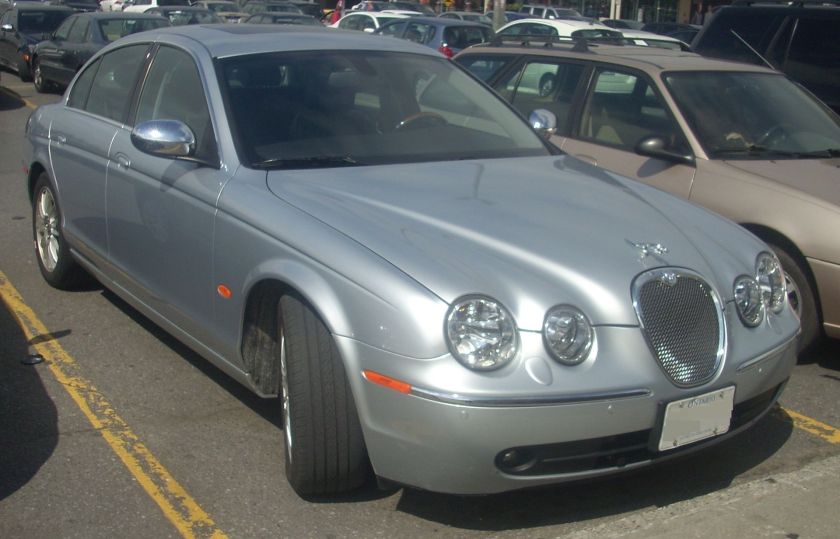 2006-08 Jaguar S-Type (North America)
2006-08 Jaguar S-Type (North America)
- 2001–2009 X-type
Jaguar X-Type
| Jaguar X-Type | |
|---|---|
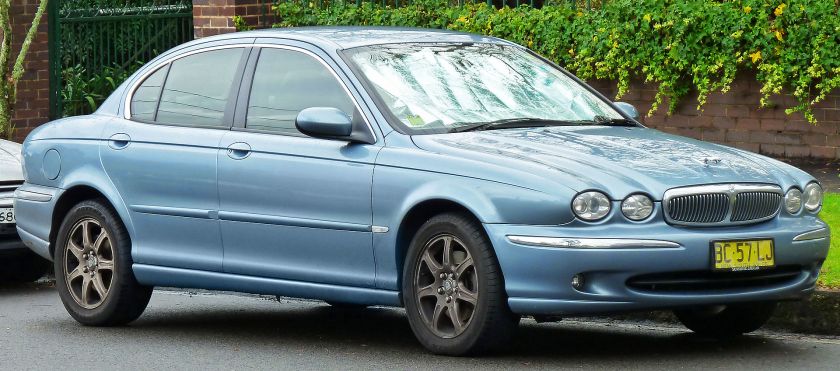
Jaguar X-Type Sedan
|
|
| Overview | |
| Manufacturer | Jaguar Cars |
| Production | 2001–2009 |
| Assembly | United Kingdom: Halewood, England (Halewood Body & Assembly) |
| Designer | Ian Callum (estate) Wayne Burgess (saloon) |
| Body and chassis | |
| Class | Compact Executive |
| Body style | 4-door saloon 5-door estate |
| Layout | Transverse Front engine, front-wheel drive / all-wheel drive |
| Platform | Ford CD132 platform |
| Related | Ford Mondeo |
| Powertrain | |
| Engine | |
| Transmission | 5-speed automatic 6-speed automatic 5-speed manual 6-speed manual |
| Dimensions | |
| Wheelbase | 106.7 in (2,710 mm) |
| Length | Saloon (’01-’08): 4,672 mm (183.9 in) Saloon (’08-’09): 4,716 mm (185.7 in) Estate (’04-’09): 185.5 in (4,710 mm) |
| Width | Body (’01-’09) 70.4 in (1,790 mm) Overall (’01-’08) 78.8 in (2,000 mm) Overall (’08-’09) 2,000 mm (78.7 in) |
| Height | Saloon (’01-’08) 54.8 in (1,390 mm) Saloon (’08-’09) 1,430 mm (56.3 in) Estate (’04-’09) 58.4 in (1,480 mm) |
| Chronology | |
| Successor | Jaguar XE |
The Jaguar X-Type is a compact executive car manufactured and marketed by Jaguar Cars from 2001 to 2009 in a single generation under the internal designation X400. Manufactured at the Halewood Assembly Facility near Liverpool, the X-Type was developed during the period when Jaguar was a division of Ford’s Premium Auto Group, was based on a modified version of the Ford CD132 platform.
The smallest of the Jaguar model range, the X-Type was marketed in sedan/saloon and wagon/estate variants, and was the first estate manufactured in series production by the company.
Description
The Jaguar X-Type, codenamed X400, was launched in October 2001. It was Jaguar’s first compact executive car since the Jaguar Mark 1 of 1955. The X-Type was one of the last to be styled under the supervision of Geoff Lawson, with Wayne Burgess as principal designer.
The four-door saloon was launched in 2001 and in 2004 the five-door estate joined the range. Production of both versions ended in 2009. The estate was officially known as the “Sportwagon” in the United States. It was the first Jaguar model designed by Ian Callum.
Initially, the X-Type was only available with all-wheel-drive and either a 2.5 litre or 3.0 litre V6 petrol engine. In 2002, an entry-level 2.1 litre V6 front-wheel-drive model was added. All three engines were available with either five-speed automatic or five-speed manual transmissions. The X-Type grille was slightly modified for both the 2004 and 2006 model years.
Facelift
The X-Type facelift was unveiled at the 2007 Canary Wharf Motorexpo. The revised X-Type went on sale internationally during 2008, with UK sales from March. The facelift featured revised front and rear facias, new door mirrors with integrated turn indicator repeaters, the choice of a 2.2-litre diesel with particulate filter and a new six-speed automatic transmission with Jaguar Sequential Shift. The range continued to offer the 2.0-litre diesel, and two V6 petrol engines; 2.5 and 3.0-litre. In some European markets, the petrol engines nolonger marketed.
On 15 July 2009, Jaguar Land Rover announced that it would end production of the X-Type by late 2009, with the loss of 300 jobs, and have a three-week shut down, at their plant in Halewood where the car was built, between September and December. By this time more than 350,000 had been produced.
Special editions
In 2004, the Spirit limited model based on the 2.5-litre V6 featured the ‘Sports Collection’ pack with new spoilers and rear valance. It was followed in 2005 by the XS limited edition, which continued the sports theme, but available with a wider range of engines.
Technical
The X-Type was based on a modified version of the Ford CD132 platform shared with the Ford Mondeo. The X-Type was initially offered as all-wheel drive only and mated to a 2.5 litre and 3.0 litre AJ-V6 petrol engine.
The Jaguar AJ-V6 engine design is unique to the Jaguar X-Type; one notable addition is the use of variable valve timing. The X-Type’s petrol engine is also set apart by the use of SFI fuel injection, four valves per cylinder and features fracture-split forged powder metal connecting rods plus a one-piece cast camshaft and has direct-acting mechanical bucket (DAMB) tappets.
In 2003, the X-Type was also offered in front-wheel drive with the introduction of Jaguar’s first four-cylinder diesel engines (based on the Ford Duratorq ZSD unit from the Mondeo and Transit), and with the smaller 2.1 litre petrol V6. The six-speed automatic transmission supplied on the later 2.2-litre diesel models includes Jaguar Sequential Shift.
Safety
| Euro NCAP 2002 X-Type | Points | Rating |
|---|---|---|
| Adult Occupant: | 26 out of 36 | |
| Pedestrian Impact: | 2 out of 36 |
| ANCAP 2010 X-Type | Points | Rating |
|---|---|---|
| Overall Score: | 26.40 out of 37 | |
| Offset Impact: | 10.40 out of 16 | |
| Side Impact: | 14.10 out of 16 | |
| Pole Impact: | 2 out of 2 | |
| Bonus Points: | 0 out of 3 |
| NHTSA 2004 X-Type | Rating |
|---|---|
| Frontal Driver: | |
| Frontal Passenger: | |
| Side Driver: | |
| Side Passenger: | |
| Rollover 4WD: |
Sales and reception
In November 2000, managing director Jonathan Browning said Jaguar’s objective was to achieve annual sales of 100,000 with the car, partly by taking market share from established German rivals and partly by expanding the market segment in Jaguar’s key markets. The X-Type was Jaguar’s best-selling model during almost all its production run, but sales did not meet projections, peaking at 50,000 in 2003. In the United States, the car’s primary market, sales dropped from 21,542 in 2004 to 10,941 in 2005. In the same year, Audi sold 48,922 A4s, BMW sold 106,950 3 Series‘ and Mercedes-Benz sold 60,658 C-Class‘.
The X-Type’s sharing of a modified Ford Mondeo platform (shared with the Land Rover Freelander Compact SUV which was also produced at Halewood) wasn’t well received by Jaguar “purists.” The X-Type’s limited powertrain choices also affected its market reception. Initially, the X-type was only available with thirsty 6-cylinder petrol engines coupled to an all-wheel drive system, whilst its key German rivals – the BMW 3-Series, Audi A4 and Mercedes C-Class are sold predominantly in 2-wheel drive form with 4-cylinder petrol or diesel engines, a critical offering in the economy-conscious European market. A 4-cylinder diesel option (with 2-wheel drive) was not offered in the X-Type until several years after its release. Time magazine called the X-Type a “British Cadillac Cimarron” in its “50 Worst Cars of All Time” list, saying its platform sharing made it unpopular.
Jeremy Clarkson of BBC‘s Top Gear lauded the X-Type, especially the 4×4 and sport versions. In two episodes he demonstrated its capabilities in the snow, declaring that it “laughs in the face of the weatherman, the police and the AA, with their advice to stay at home”. Although he gives a different representation of the car being a Ford Mondeo underneath, affirming that this should not put you off, saying that “genetically, you are 98% identical to a halibut, but it’s the 2% that makes the difference”.
Other car magazine and website reviews were largely positive for the X-Type, especially during its introduction. The X-Type used only 20% of Ford Mondeo’s components, while a variety of Ford platforms, engines and components were being used by all models of the Ford Motor Company’s luxury brands in that period, namely Aston Martin, Jaguar and Lincoln. In 2008, Jaguar director of design Ian Callum said that the X-Type “was essentially designed in Detroit and presented as close as a fait accompli to reluctant designers and engineers at Jaguar’s Whitley design centre.”
- 2008–present XF
Jaguar XF
| Jaguar XF | |
|---|---|
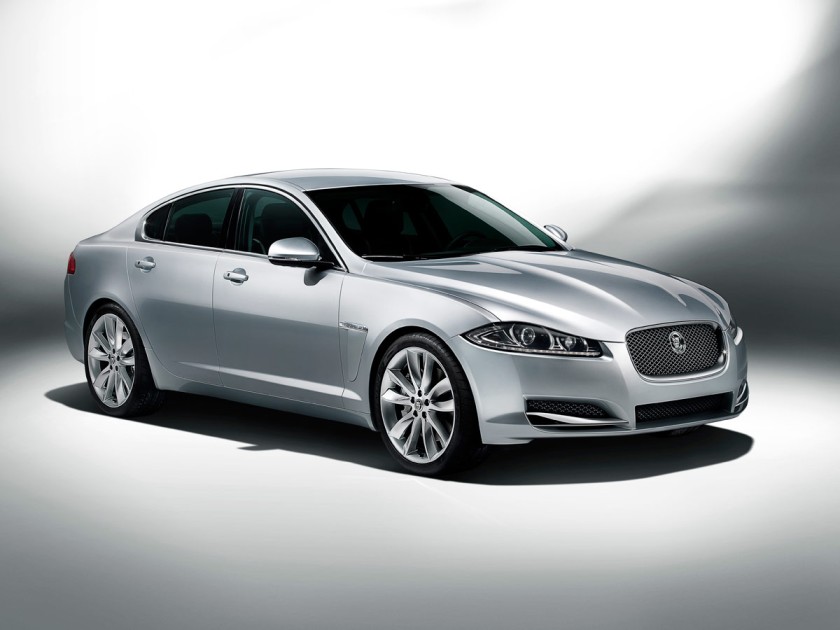 |
|
| Overview | |
| Manufacturer | Jaguar Cars |
| Production | 2007–present |
| Assembly | Castle Bromwich Assembly, Birmingham, England Pune, India (CKD) |
| Designer | Ian Callum (2005) |
| Body and chassis | |
| Class | Executive car/Mid-size luxury car |
| Body style | 4-door saloon 5-door estate |
| Layout | FR |
| Platform | Ford DEW98 platform |
| Related | Lincoln LS (2000–2006) Ford Thunderbird (2002–2005) Jaguar S-Type (1999–2008) |
| Powertrain | |
| Engine | petrol 2.0 T I4 3.0 V6 3.0 S V6 4.2 V8 4.2 S V8 5.0 V8 5.0 S V8 diesel 2.2 I4 2.7 V6 3.0 V6 |
| Transmission | 6-speed automatic
8-speed automatic |
| Dimensions | |
| Wheelbase | 2,909 mm (114.5 in) |
| Length | 4,961 mm (195.3 in) Saloon
4,966 mm (195.5 in) Sportbrake |
| Width | 1,877 mm (73.9 in) (exc. mirrors; 2008-2011)
2,077 mm (81.8 in) (inc. mirrors; 2008-2011) |
| Height | 1,460 mm (57.5 in) |
| Kerb weight | 1,850 kg (4,079 lb) |
| Chronology | |
| Predecessor | Jaguar S-Type |
The Jaguar XF (codename: X250) is an executive/mid-size luxury car and estate produced by British car manufacturer Jaguar Cars which was first revealed in autumn 2007 as a replacement for the Jaguar S-Type.
Overview
The XF was developed at Jaguar’s Whitley design and development HQ in Coventry and is built at Castle Bromwich Assembly facility in Birmingham. During its development the XF was known by its codename X250.
The XF was launched at the 2007 Frankfurt Motor Show, following the public showing of the C-XF concept in January 2007 at the North American International Auto Show. Designed by Jaguar’s design director Ian Callum, it was a significant design change from its predecessor. The styling of the finalised production XF varies from that of the C-XF, most notably around the front lights and nose, which incorporates an oval mesh grille harking back to the original Jaguar XJ of 1968. The boot lid retained the S-Type’s chromed blade to its edge, but also included a “leaper” Jaguar logo as well.
The interior included some unique features such as the air conditioning vents which are flush-fitting in the dash, rotating open once the engine is started, and a rotating gearshift dial called the JaguarDrive Selector which rises out of the centre console. Another departure from the traditional Jaguar cabin ambiance is the use of pale-blue backlighting to the instruments, switchgear, and around major control panels. Some minor systems, such as the interior lighting, are controlled simply by touching the light covers. The glove compartment also opens to the touch. Unusually the XF has no cloth interior option, with even the entry level model being fully trimmed in leather – even areas that have employed plastic on previous Jaguars. Real wood veneers are available, but have been joined by aluminium, carbon fibre and piano black lacquer trims to create a modern look to the passenger compartment.
Customer deliveries commenced in March 2008, with a range of V6 and V8 engines.
Worldwide Sales
| Year | Sales |
|---|---|
| 2009 | 26,247 |
| 2010 | 34,368 |
| 2011 | 30,646 |
| 2012 | 34,693 |
| 2013 | 47,422 |
Facelift (2011)
In April 2011, Jaguar revealed the details of a facelift for the XF at the New York International Auto Show, with manufacturing beginning in July 2011.[
The facelift includes front and rear styling changes which are based on the original Jaguar C-XF concept car, internal trim enhancements, adaptive cruise control, and a new four-cylinder 187 bhp (139 kW; 190 PS) 450 N·m (332 lb·ft) 2.2-litre diesel engine, which is combined with a new eight-speed automatic transmission and stop-start technology to emit 149 g/km CO2 and fuel consumption of 52.3 mpg-imp (5.40 L/100 km; 43.5 mpg-US).
XF models
The XF was launched with a variety of models called, depending on country, ‘SE’, ‘Luxury’, ‘Premium Luxury’ (or ‘Premium’), ‘Portfolio’ (or ‘Premium Portfolio’), ‘SV8’ (or ‘Supercharged’) and ‘R’. For the UK market, company car friendly ‘Executive Edition’ and ‘SE Business’ models with a lower tuned versions of the 3.0 L and 2.2 L diesel engines respectively are available.
XF Supercharged (2009–)
The 2008 4.2-litre supercharged engined was replaced by the new 5.0-litre supercharged engine rated at 470 PS (346 kW; 464 hp), and came with Adaptive Dynamics (computer controlled continuously variable damping) and Active Differential Control (electronically controlled rear differential).
XFR (2009–)
The XFR was announced at Detroit‘s North American International Auto Show in January 2009 as a new performance derivative of the XF range, and featured the new 5.0-litre supercharged AJ-V8 Gen III engine rated 510 PS (375 kW; 503 hp), a revised front bumper and spoiler and 20-inch (510 mm) alloy wheels.
Police car (2009–)
A special version of the XF Diesel S was announced in 2009 for the UK police car market, with the first police force orders in 2010. Its emergency vehicle equipment included a roof-mounted light bar with 3,600 light elements, side alley lights, blue and white strobing LEDs in the grille and blue flashing LEDs along the side of the car, blue and red flashing LED lights in the rear light clusters.
XF Sportbrake (2012–)
The Sportbrake was formally revealed in March 2012, and went on-sale date in October of the same year. It is available with all of the saloon’s engines and has a loading capacity of 550 litres (19 cubic feet) with the seats up and 1,675 litres (59.2 cubic feet) with them folded. The maximum capacity surpasses that of rivals BMW 5-Series Touring, Cadillac CTS Sport Wagon, and the Mercedes-Benz CLS Shooting Brake. The extended roofline increases rear headroom by 48 mm (1.9 inches) and the rear bench includes a 60:40 split and remote-controlled ‘one-touch’ folding function. The load area is fitted with multi-function rails and is 1,970 mm (78 inches) long and 1,064 millimetres (41.9 in) wide.
XFR-S (2013–)
An R-S version of the XF was confirmed in 2012 following on from a picture that Jaguar released shortly before the Los Angeles Motor Show. It uses the same 5.0-litre supercharged V8 engine as the XKR.
The engine produces 550 PS (400 kW) and 680 N·m (500 lbf·ft) of torque. The XFR-S has an electronically limited top speed of 300 km/h and does 0-60 mph in 4.4 seconds. The XFR-S differs from the normal XFR as it has bespoke 20-inch Varuna-design alloy wheels, wider front grills and carbon fibre. The front grills improve aerodynamic efficiency as does the large rear wing. Combined, they cut lift by 68%. At the back there is a rear diffuser and quad tailpipes. The suspension is stiffer by 30% and the electronic differential and stability control are reprogrammed to take the extra power.
Specifications
Aerodynamics
The car body was developed using Computational Fluid Dynamics (CFD) before the car ever saw a wind tunnel. Every area from the outer skin to the lightweight, composite undertray to the cooling airflow (even the shape of the exterior mirrors) was optimised using this process. The higher, squarer tail is more efficient aerodynamically than a lower, rounded one, and the XF’s coupé-like roofline and raised bootlid lip improve airflow over the rear of the car.
Chassis
The basic sub-structure of the XF has been carried over from the S-Type, although the body has been stretched to meet crash safety requirements, and heightened to provide additional headroom while still retaining the “saloon within a coupé” proportions. The suspension and mountings are the same as that used on the XK, while the engine line-up is basically similar to that used in the S-Type.
Sound and vibration insulation is provided by the addition of a special underbody tray and engine mounts, a tuned exhaust system, and a double bulkhead between the engine bay and passenger compartment.
Engine specifications
All XF models are automatic and are Euro 5 compliant. The naturally-aspirated petrol 3.0 V6 was discontinued in Europe in 2010, but continues to be sold elsewhere.
Next Green Car (NGC) an organisation that analyses vehicle emissions and rates them from 0 (cleanest) to 100 (dirtiest) – analysed the emissions from Jaguar’s current XF range: ADAC’s EcoTest has also rated three of the diesel engines.
The 2.7-litre V6 diesel engine, replaced in 2009 with a new 3.0-litre V6 diesel AJ-V6D Gen III, came in two states of tune. The diesel engines are a product of the joint venture between Ford and Peugeot-Citroën.
Transmissions
The XF was launched with only an automatic gearbox. The six-speed ZF automatic with torque converter lock-up is programmed to shift 10% quicker than before and is fitted to all petrol engines. Diesel engines are fitted with an advanced eight-speed ZF automatic transmission. On both transmissions the gears can either be selected using a rotary dial that rises from the centre console on start-up or can be manually controlled using paddles behind the steering wheel. An AWD option is available in some left hand drive markets, and is only available with the supercharged 3.0L V6 engine.
Equipment
Sound system
The standard audio system comprises a ten-speaker, 250 W set-up that includes a radio, CD player, WMA and MP3 compatibility as well as USB storage devices.
From 2008 to 2012, there was an optional Bowers & Wilkins (B&W) sound system available. At its core there are 17 speakers which (with the exception of the aluminium high-frequency tweeters) employ B&W’s Kevlar composite speaker cones. Each front door contains a 168 mm (6.6 in) woofer, a 100 mm (4 in) mid-range speaker and a 25 mm (1.0 in) dome tweeter (the latter two wired in parallel with a crossover), while each rear door houses a similar 168 mm (6.6 in) woofer and 25 mm (1.0 in) tweeter. As a centre speaker there is a 100 mm (4 in) full-range driver, similar to the two 100 mm (4 in) full-range ‘surround’ speakers located on the rear parcel shelf. The B&W system has been reviewed by journalists at Autocar magazine, who proclaimed it the best in-car system they have ever heard.
For 2013 models, Jaguar introduced the option of a new Meridian sound system upgrade instead of B&W; with a choice of 380 W 11-speaker or an 825 W surround sound 17-speaker system.
Multimedia interaction
A 7-inch full-colour screen is fitted to the dashboard of all XFs and can be used to control most multimedia systems. The same screen can also be upgraded with analogue and digital television capability. Available as an option is JaguarVoice which allows the driver to speak commands in order to control everything from the sound and navigation systems to telephone calls and the climate control system.
Safety
The XF was crash tested in 2010 by EuroNCAP and it gained a four star rating. The XF’s result was seen as a disappointment by some car magazines. When retested in 2011, the XF turned in improved scores in adult occupant, child occupant and pedestrian areas.
| Jaguar XF Euro NCAP 2010 |
Jaguar XF Euro NCAP 2011 |
||||||||||||||||||||||||||||||||||||
|---|---|---|---|---|---|---|---|---|---|---|---|---|---|---|---|---|---|---|---|---|---|---|---|---|---|---|---|---|---|---|---|---|---|---|---|---|---|
|
|
The Australasian New Car Assessment Program (ANCAP) also tested the XF and gave it a score of 32.38 points out of 37, giving it an ANCAP rating of 4 out of 5.
Thatcham’s New Car Whiplash Ratings awarded the XF ‘good’ score for Geometric, Dynamic and Overall ratings.
Security
Deadlocks, an alarm and an engine immobiliser are fitted as standard to the XF. The car also locks itself when it reaches a pre-set speed to help protect against carjackings. The XF was tested by Thatcham’s New Vehicle Security Ratings (NVSR) organisation and achieved the following ratings:
| NVSR | Rating |
|---|---|
| Theft of car: | |
| Theft from car: |
Critical reception
Jeremy Clarkson of ‘Top Gear reviewed the XFR during episode 5 of series 13. During the review he said: “I’m not going to, even for a minute suggest that it’s [XFR] better than the M5, but it’s as-good-as. And praise does not get higher than that”. During the same episode The Stig managed a lap time of 1:26.7 s with the XFR, making the XFR only 0.5 s slower than its rival the BMW M5 (1:26.2).
Jaguar speed record
On 7 November 2008, a modified XFR was driven by Paul Gentilozzi of Rocketsports, who prepared the car, to a new Jaguar record of 225.675 mph (363.189 km/h) on the Bonneville Salt Flats. The new record beat the previous Jaguar record of 217.1 mph (349.4 km/h) in an XJ220 in 1992. Changes to the stock vehicle included low-mounted rear spoiler, increased power to 510 PS (375 kW; 503 hp) by a remapped ECU, a modified air intake and exhaust system and revised supercharger settings.
Awards
- The concept C-XF was awarded 2007 North American Production Preview Vehicle of the Year award.
- What Diesel? magazine awarded the XF both the Car of the Year and Best Executive Car awards in 2008.
- In 2009, What Diesel? magazine, for the second year running, awarded the XF both the Car of the Year and Best Executive Car awards.
- The XF won the What Car? Best Executive Car category again in 2009,
- The XF won the What Car? Best Executive Car award for the third time in 2010.
- For the fourth successive year, the XF won the What Car? Best Executive Car award in 2011.
- In August 2011 the XF was awarded Car of the Decade by Auto Express
- 2015- Jaguar XE
Sports
- 1948–1954 XK120
- 1954–1957 XK140
- 1957–1961 XK150
- 1961–1974 E-Type
- 1975–1996 XJ-S
- 1992–1994 XJ220
- 1997–2006 XK8/XKR (X100)
- 2006–2014 XK (X150)
- 2013–present F-Type
- 2016(announced) F-Pace
Racing and competition
- 1950s C-Type
- 1950s D-Type
- 1960s E-Type Lightweight
- 1985–1992 XJR-5 through XJR-17
- 2009 XFR Bonneville Salt Flats speed record
- 2010 Jaguar RSR XKR GT2
Concept models
- E1A — The 1950s E-Type concept vehicle
- E2 A — The second E-Type concept vehicle, which raced at LeMans and in the USA
- Pirana (1967) — Designed by Bertone
- XJ13 (1966) — Built to race at LeMans, never run
- XK 180 (1998) — Roadster concept based on the XK8
- F-Type (2000) — Roadster, similar to the XK8 but smaller
- R-Coupé (2001) — Large four-seater coupé
- Fuore XF 10 (2003)
- R-D6 (2003) — Compact four-seat coupé
- XK-RR — A high-performance version of last generation XK coupé
- XK-RS — Another performance-spec version of last generation XK convertible
- Concept Eight (2004) — Super-luxury version of the long-wheelbase model of the XJ
- C-XF (2007) — Precursor to the production model XF saloon
- C-X75 (2010) — Hybrid-electric sports car, originally intended for production but cancelled in 2012
- C-X16 (2011) — Precursor to the production model F-Type
- C-X17 (2013) — First ever Jaguar SUV concept
- Project 7 — a 542 bhp V8-powered speedster based on the F-Type and inspired by the D-Type (2013)
Engines
Jaguar has designed in-house four generations of engines.
- Historical engines:
- Current engines:
- Jaguar AJ-V8 engine—V8 (fourth generation Jaguar engine)
- Jaguar AJ-V6 engine—V6 (a variation of a Ford engine)
- Jaguar AJD-V6 engine—V6 (diesel engine designed by Ford)
Motorsport
- See also: Jaguar Racing and Jaguar XJR Sportscars
Jaguar XJ-S won the 1984 European Touring Car Championship
The Jaguar R5 being driven by Mark Webber in 2004—the team’s last season in F1
The company has had major success in sports car racing, particularly in the Le Mans 24 Hours. Victories came in 1951 and 1953 with the C-Type, then in 1955, 1956and 1957 with the D-Type. The manager of the racing team during this period,Lofty England, later became CEO of Jaguar in the early 1970s. Although the prototype XJ13 was built in the mid-1960s it was never raced, and the famous race was then left for many years.
In 1982, a successful relationship with Tom Walkinshaw‘s TWR team commenced with the XJ-S competing in the European Touring Car Championship, which it won in 1984. In 1985, the TWR XJ-S won the Bathurst 1000 race. In the mid-1980s TWR started designing and preparing Jaguar V12-engined Group C cars for World Sports Prototype Championship races. The team started winning regularly from 1987, and won Le Mans in 1988 and 1990 with the XJR series sports cars. The Jaguar XJR-14was the last of the XJRs to win, taking the 1991 World Sportscar Championship.
In the 1999, Ford decided that Jaguar would be the corporation’s Formula Oneentry. Ford bought out the Milton Keynes-based Stewart Grand Prix team and rebranded it as Jaguar Racing for the 2000 season. The Jaguar F1 program was not a success however, achieving only two podium finishes in five seasons of competition between 2000 and 2004. At the end of 2004, with costs mounting and Ford’s profits dwindling, the F1 team was seen as an unneeded expense and was sold to Red Bull energy drinks owner Dietrich Mateschitz, and it became Red Bull Racing. Since 2004 Jaguar has not had an official presence in motorsport.
Notable Jaguar sports racers:
- Jaguar C-Type (1951–1953)
- Jaguar D-Type (1954–1957)
- Jaguar Lightweight E-Type
- Jaguar XJ13
- Jaguar XJR Sportscars
- Jaguar XJR-9 (1988)
- XJ220 (1988)
- XJR-15 (1990)
Electric vehicles
Lotus Cars joined Jaguar, MIRA Ltd and Caparo on a luxury hybrid executive sedanproject called “Limo-Green”—funded by the UK Government Technology Strategy Board. The vehicle will be a series plug-in hybrid.
Facilities
Jaguar Land Rover operations are split between several sites, most of which are used for work on both the Jaguar and Land Rover brands.
Current plants
- Whitley Engineering Centre – Jaguar Land Rover’s headquarters and a research and development centre. The older part of this plant was acquired from Peugeotin the 1980s, and was formerly a First World War airfield, an aircraft factory and then a missile factory before being sold to the Rootes Group (later Chrysler Europe).
- Gaydon Engineering Centre – Jaguar Land Rover’s other research and development centre. Formerly an RAF bomber base before being acquired by British Leyland and redeveloped as a vehicle design, development and testing centre. Part of this site is also the Aston Martin headquarters, development centre and factory.
- Castle Bromwich – Jaguar Land Rover’s main Jaguar assembly plant, producing the XF, XJ, XK and F-Type ranges. Originally an aircraft factory during World War Two – Spitfires were built there, it was later acquired by Pressed Steel Fisher and became a vehicle body assembly works, it came under the auspices of Jaguar through the merger with BMC in the 1960s.
- Solihull – Jaguar Land Rover’s principal Land Rover assembly plant. This was originally an aircraft engine plant during World War Two, being used for as aRover plant after the war. The Jaguar XE will become the first Jaguar car to be assembled at the facility in late 2014, followed by the Jaguar F-Pace crossover from 2016.
- Halewood, Merseyside – Now used by Jaguar Land Rover for Land Rover production. Originally a Ford assembly plant (the Ford Escort being its most prolific model) it was given to Jaguar in 2000 for production of the X-Type. Ford still owns the transmission manufacturing operation at Halewood.
- Wolverhampton Engine Plant – a new £500 million facility located at the i54 site in Staffordshire close to Wolverhampton to build the new Ingenium family of modular diesel and petrol engines. The plant was officially opened by Her Majesty Queen Elizabeth II on Thursday, October 30, 2014.
Future plants
- Ryton-on-Dunsmore – Jaguar Land Rover announced that it will build a new Special Vehicle Operations development centre there in 2016. The site was previously used by Rootes for aircraft production plant for World War Two, and later became the Rootes/Chrysler/Peugeot car plant which was closed in 2006 and has since been completely demolished and the site cleared.
Past Jaguar plants
- Holbrooks Lane, Coventry – by the time Swallow Sidecar Company started using the Jaguar name, they had relocated from Blackpool to Holbrooks Lane in Coventry.
- Browns Lane – The most well-known site for Jaguar production from 1951, it was progressively run down and replaced by Castle Bromwich. Most of the plant has now been demolished and is now the home of Jaguar Land Rover’s heritage centre.
- Radford – originally a Daimler bus plant but was later a Jaguar engine and axle plant. Closed by Ford in 1997 when it moved all Jaguar engine production to itsBridgend facility.
Jaguar and the arts
For some time now Jaguar has been active in the international arts scene. In particular, the company has collaborated with the artist Stefan Szczesny, implementing major art projects. In 2011, Jaguar presented the exhibition series “Shadows”, which involved the installation of Szczesny’s shadow sculptures in Sankt-Moritz, on Sylt and in Saint-Tropez. In 2012, a large number of sculptures, ceramics and paintings were shown in Frankfurt (and mainly in Frankfurt’s Palmengarten).
As part of the collaboration with Szczesny, Jaguar has released the “Jaguar Art Collection”.
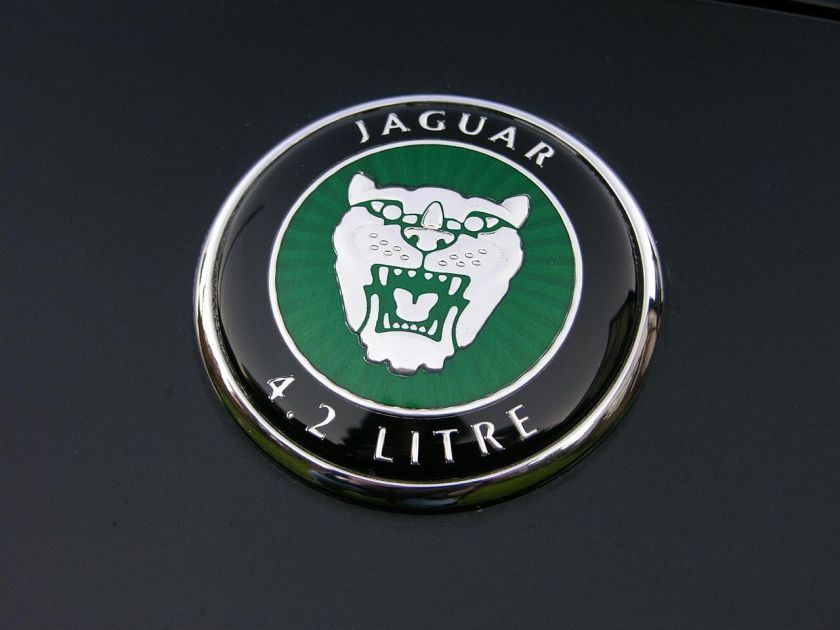
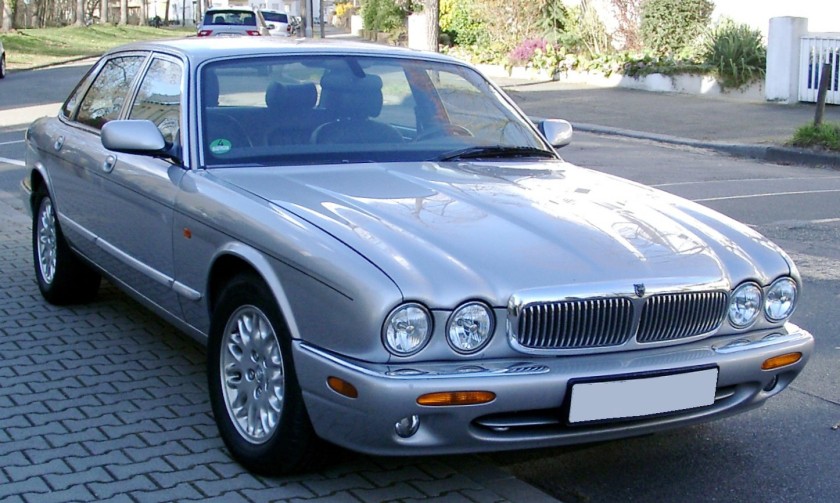
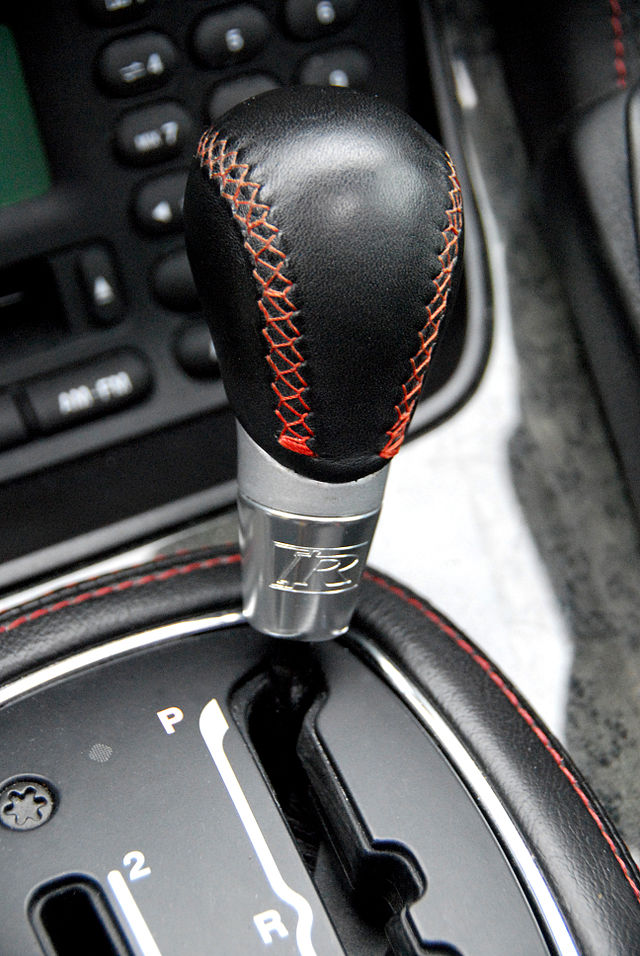
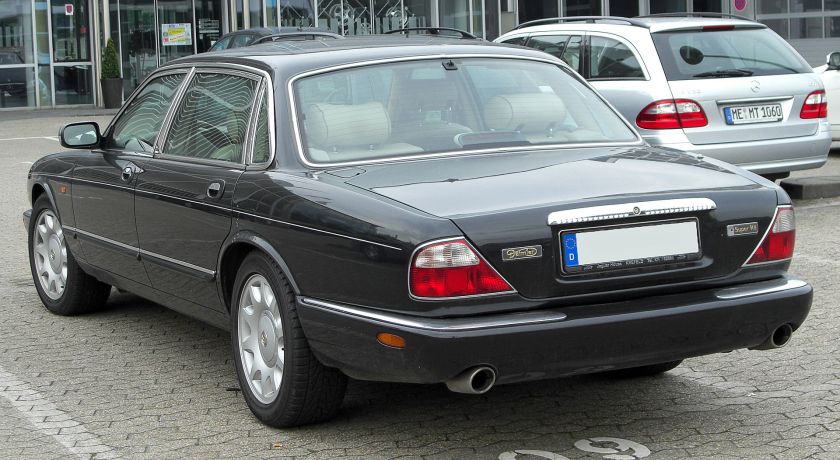
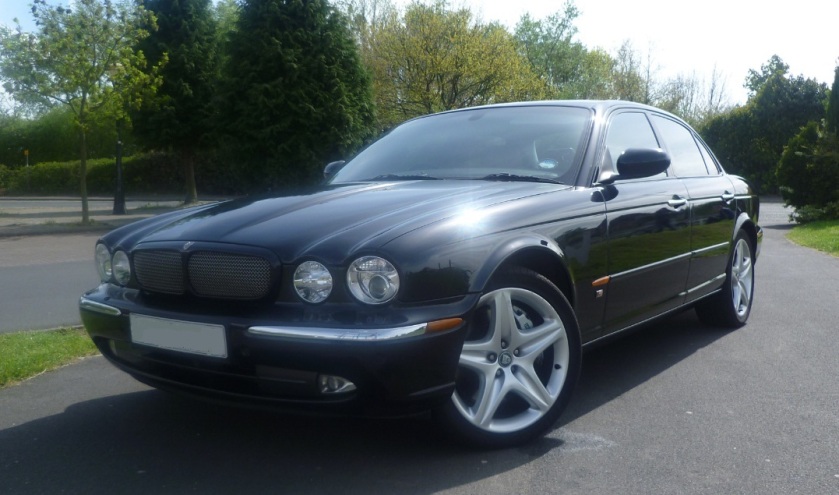
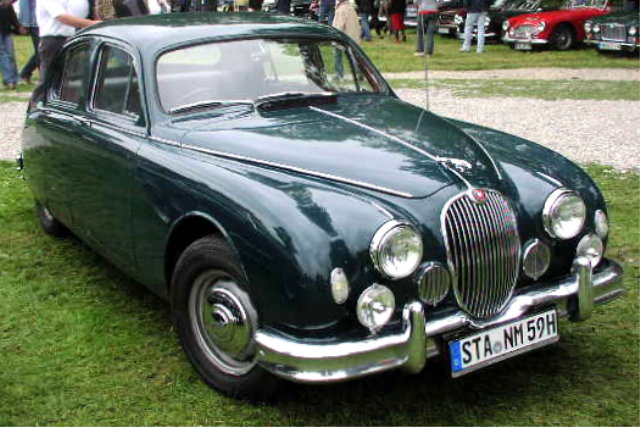
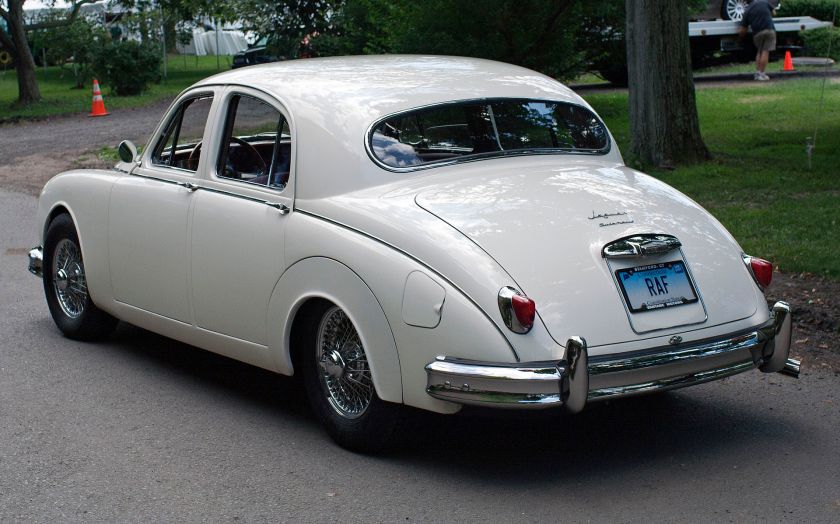
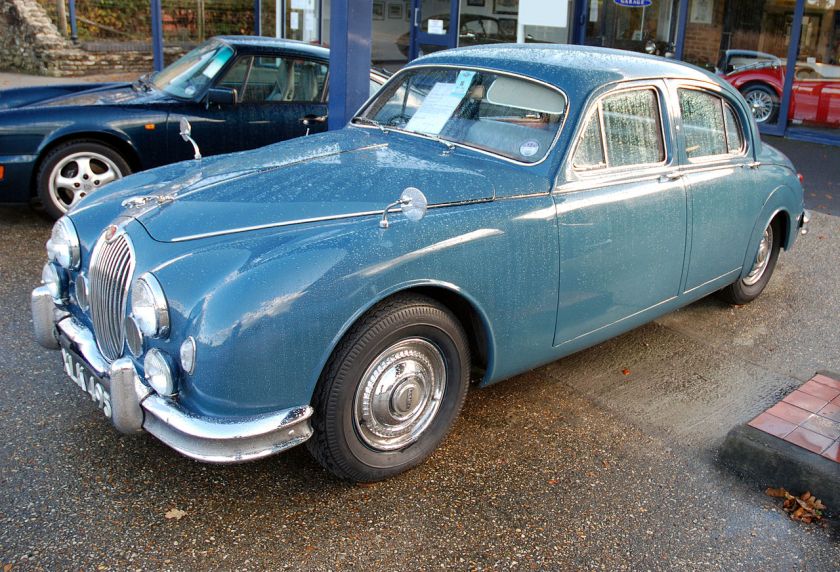
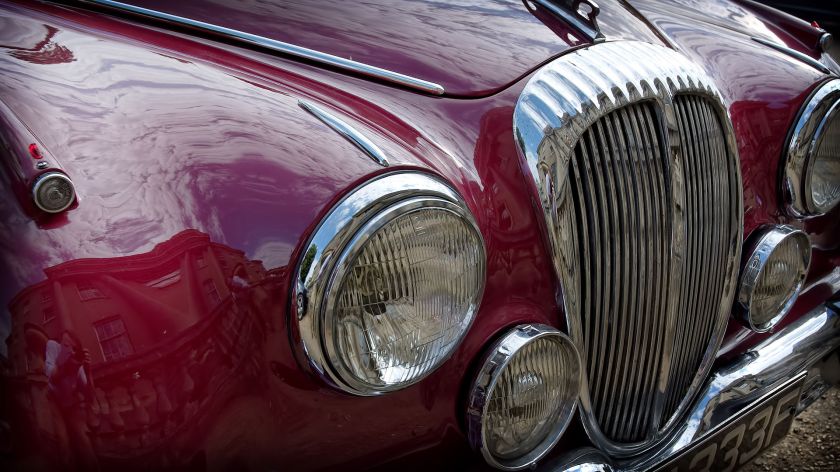
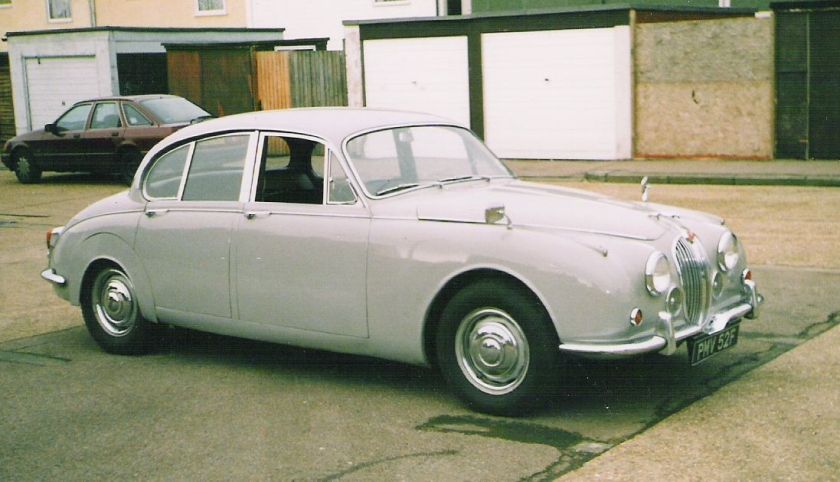
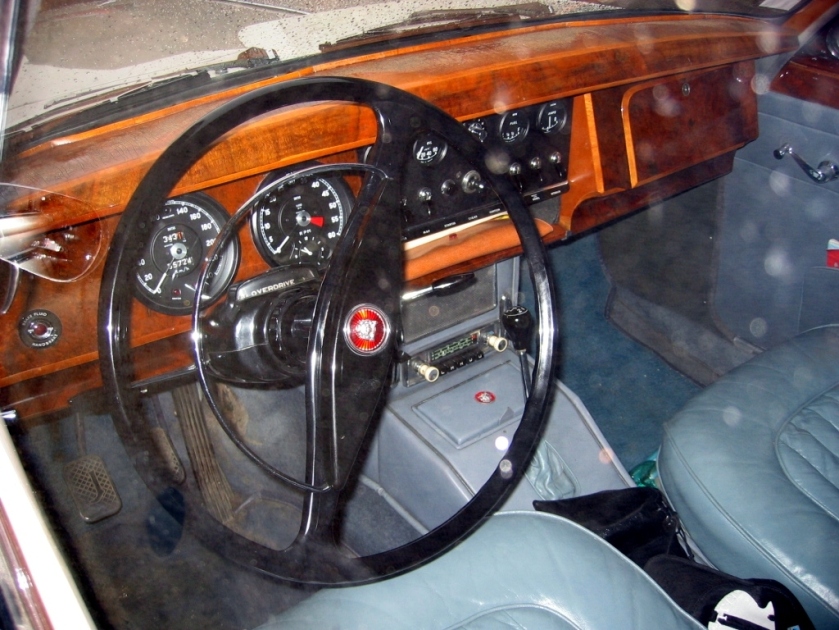
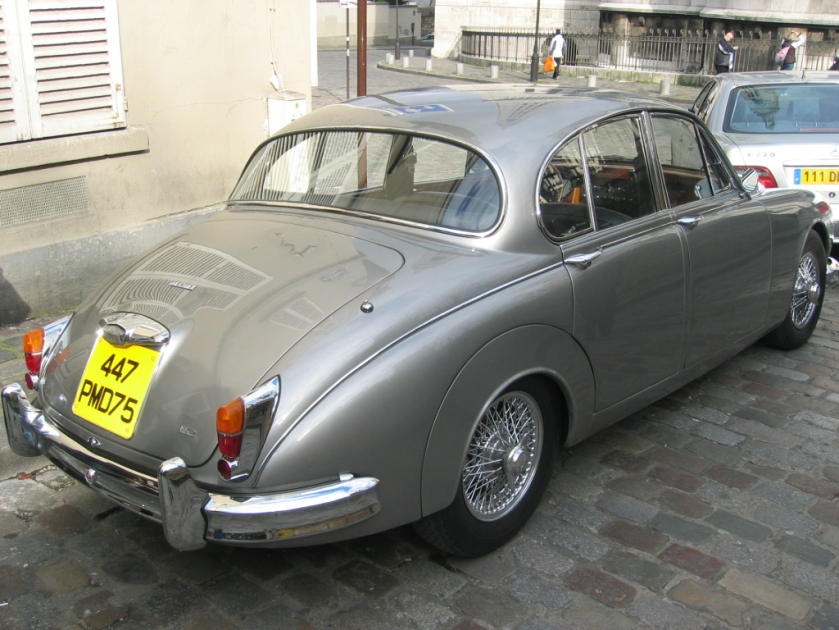
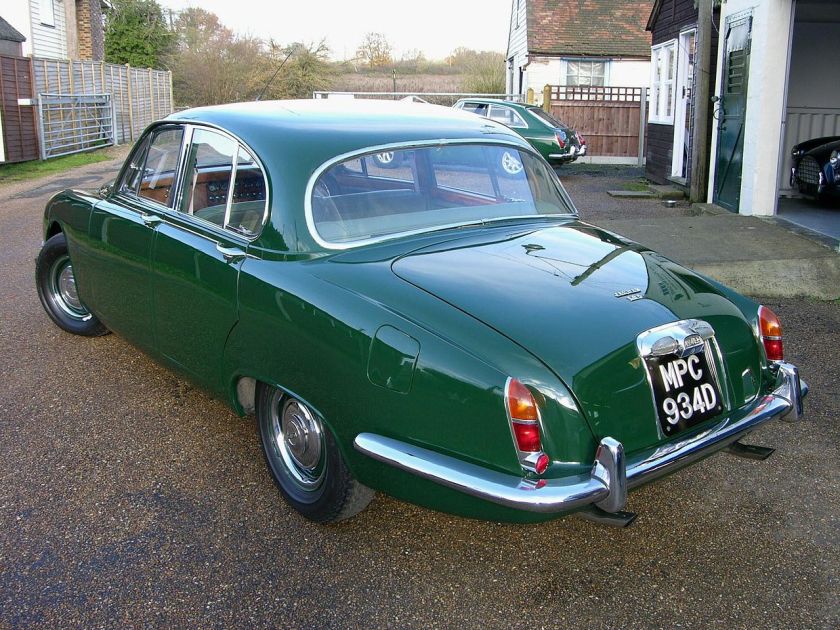
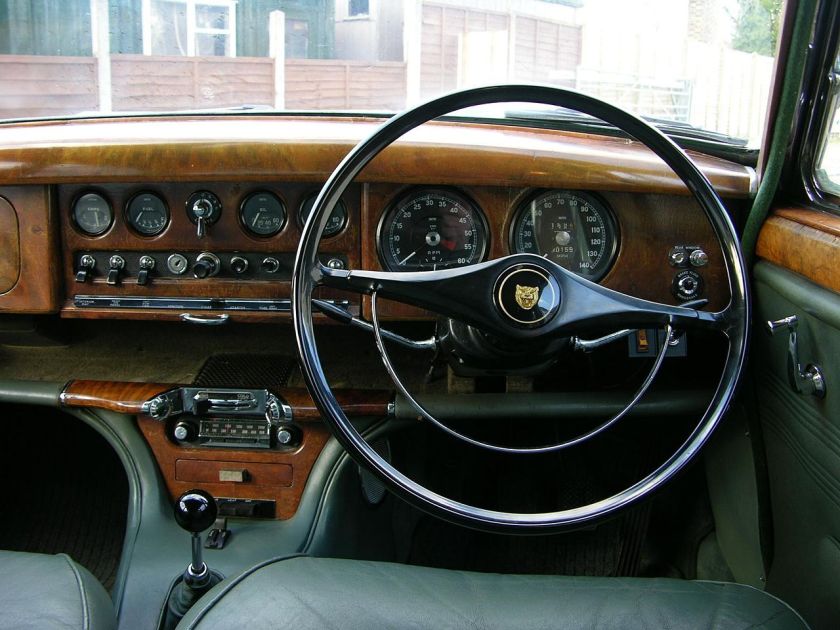
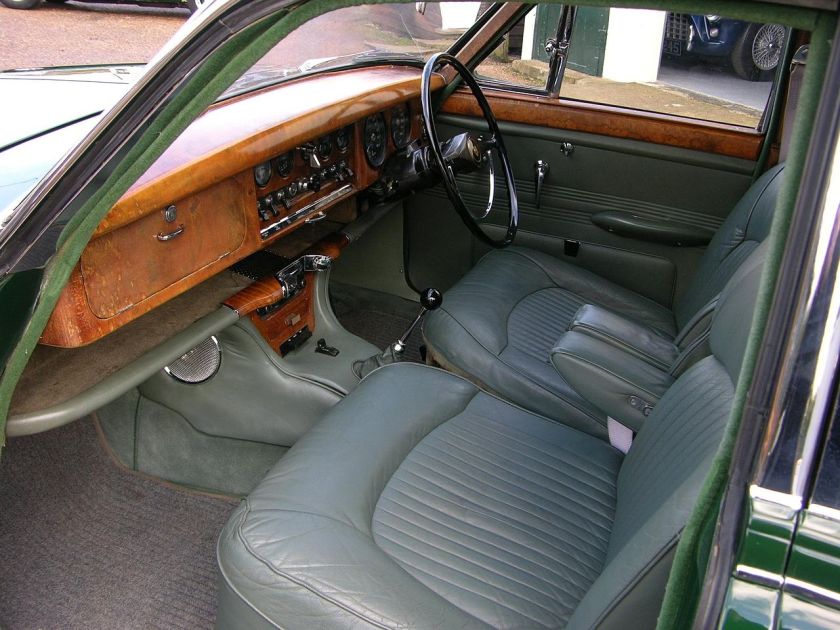
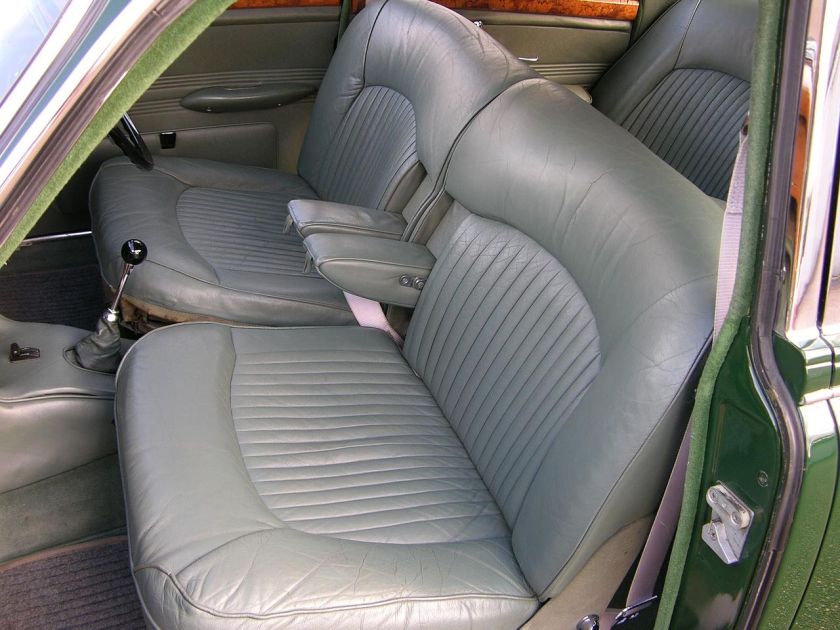
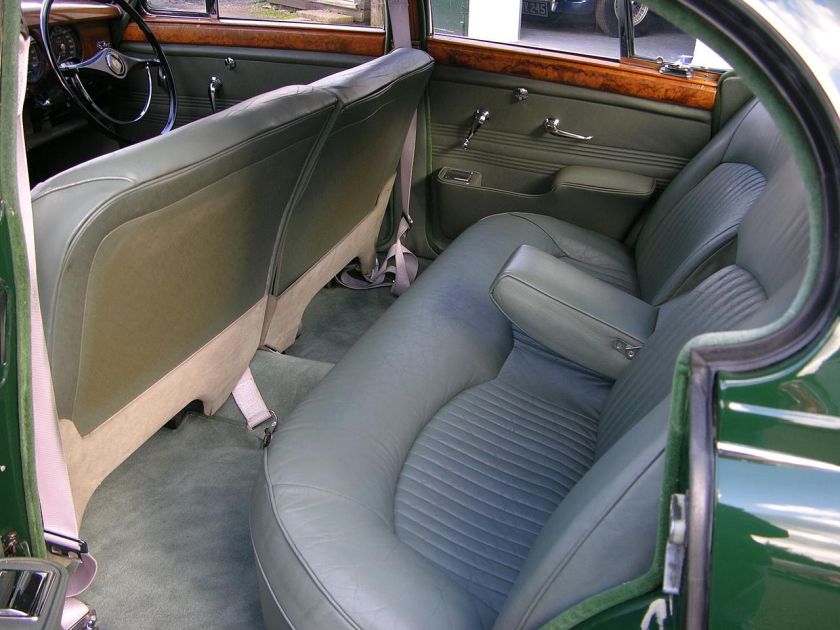
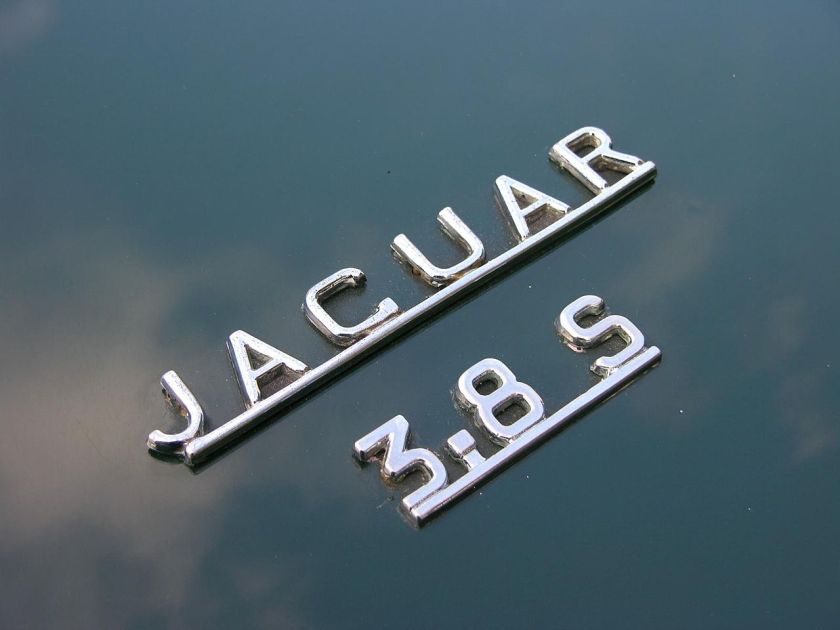
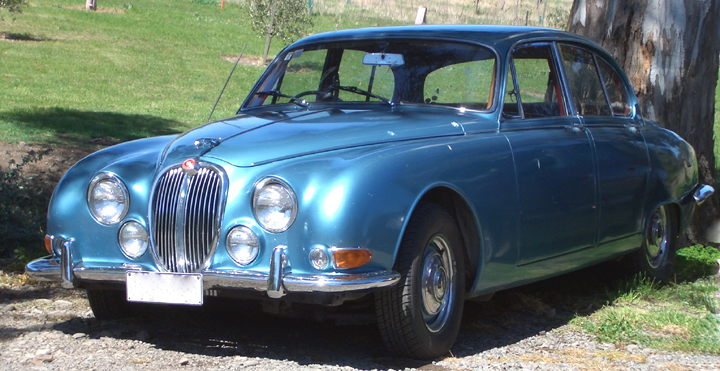
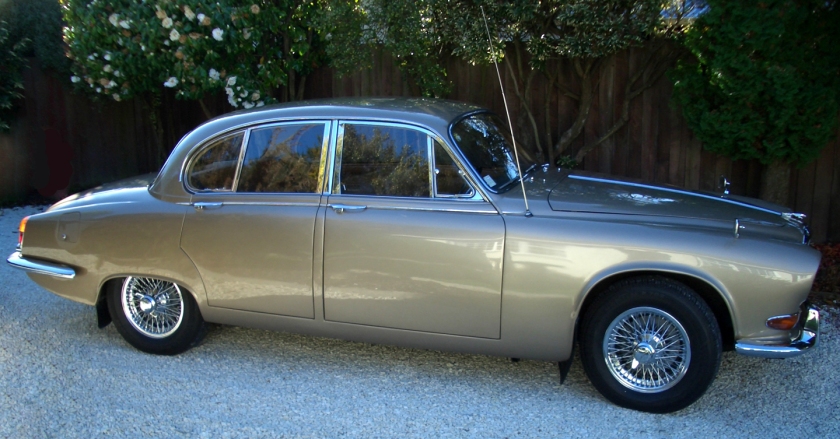
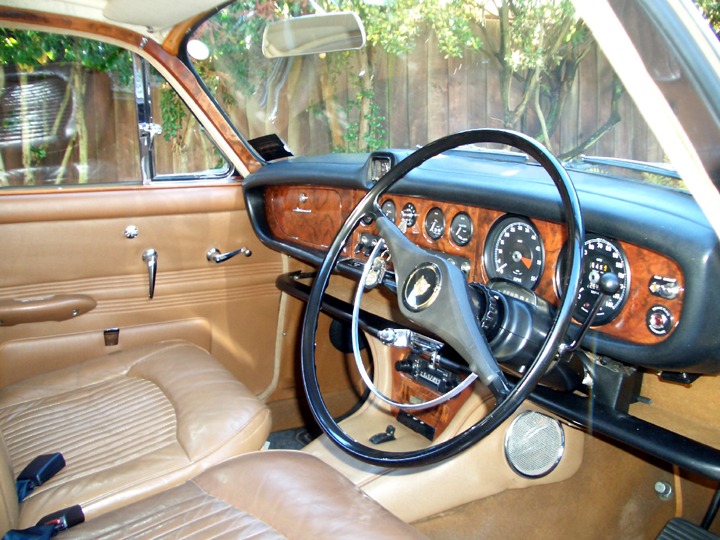
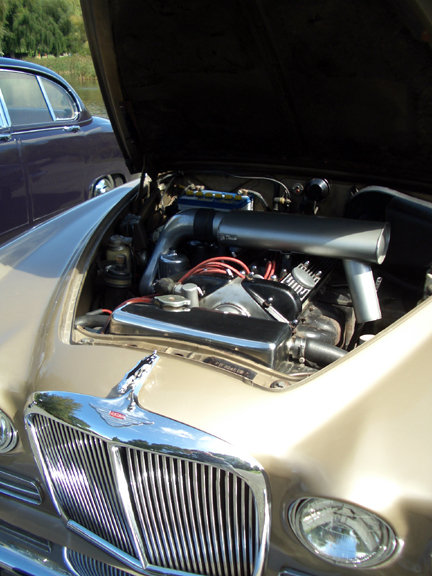
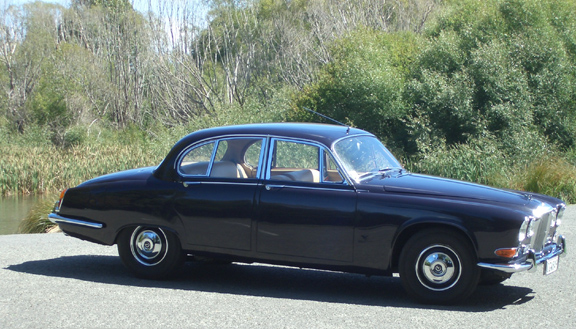
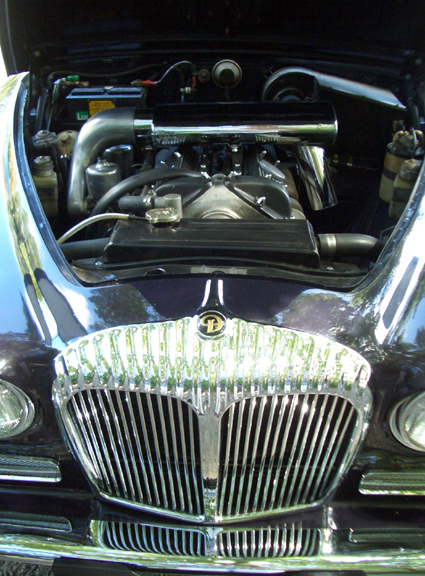
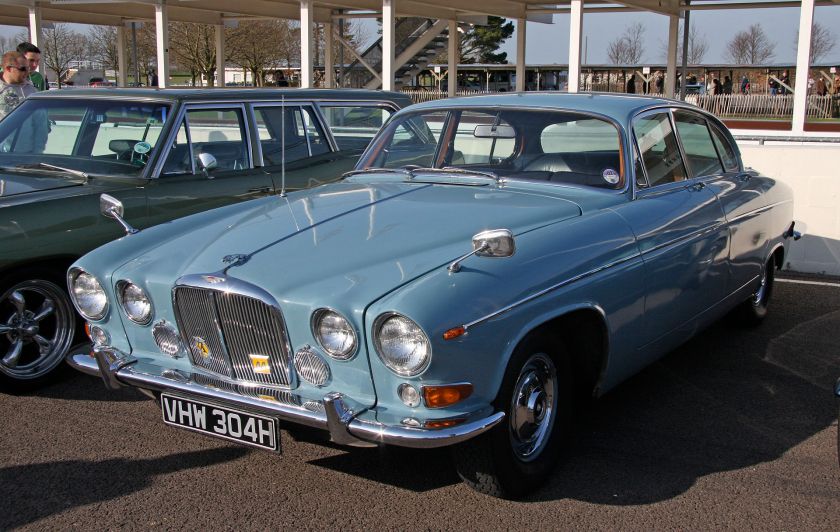
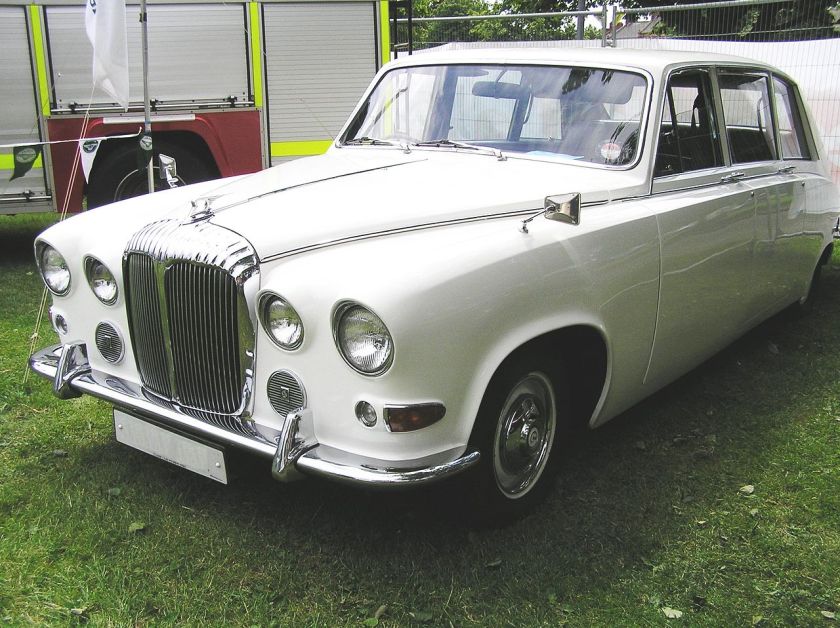

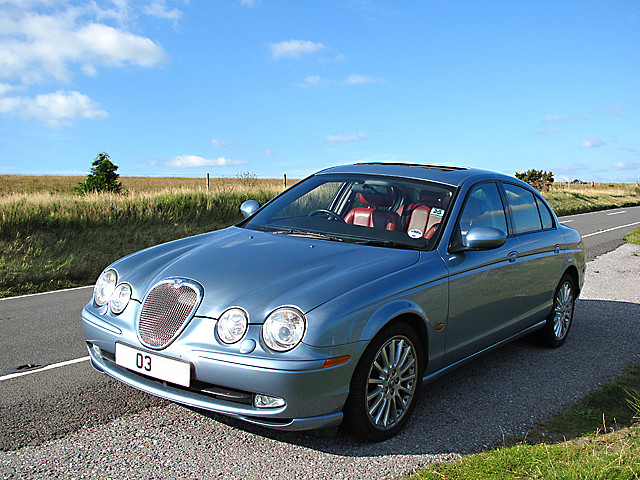
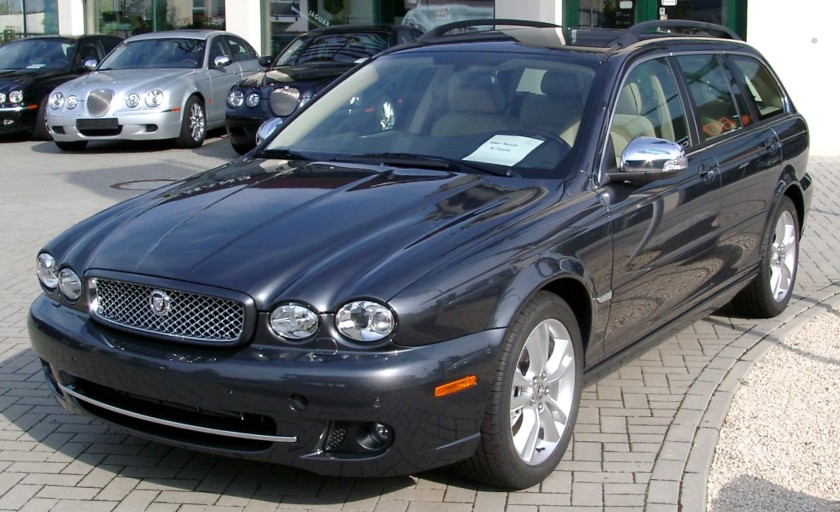
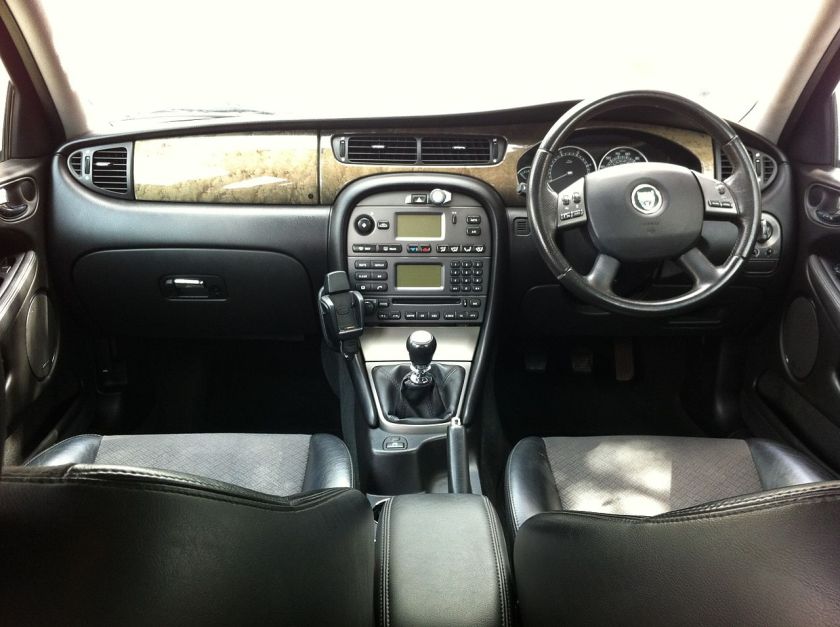
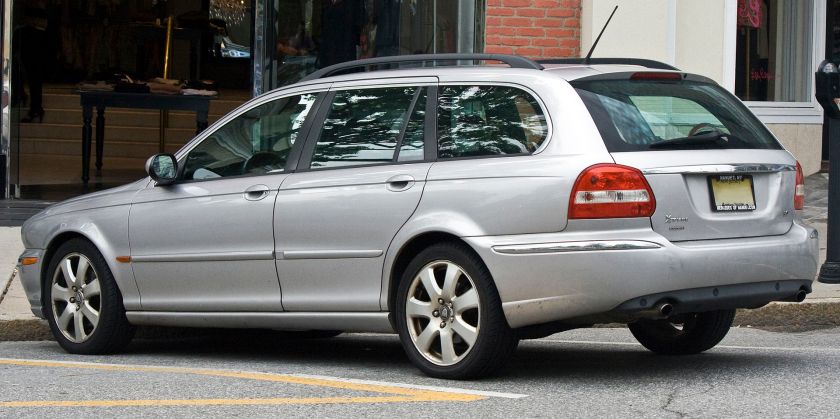
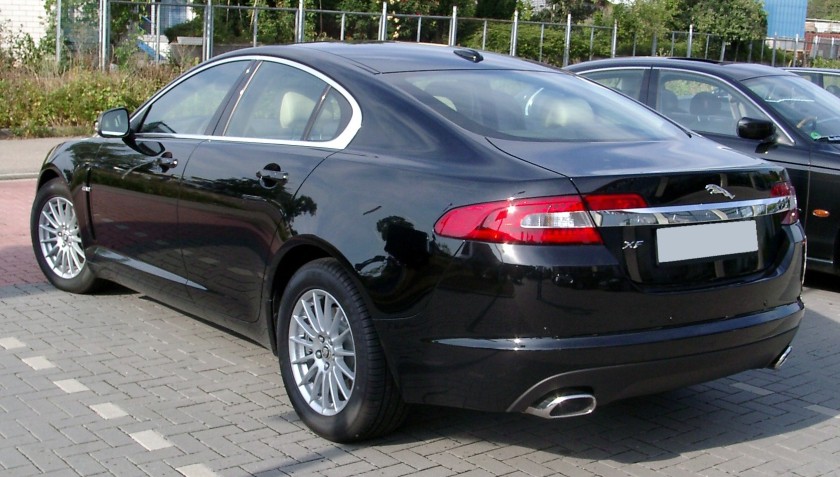
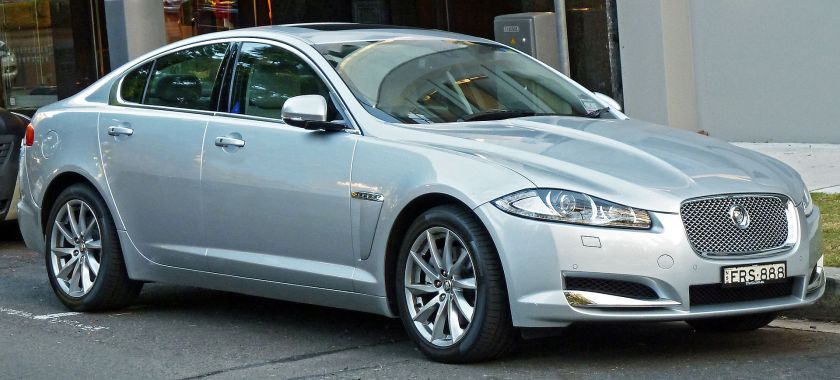
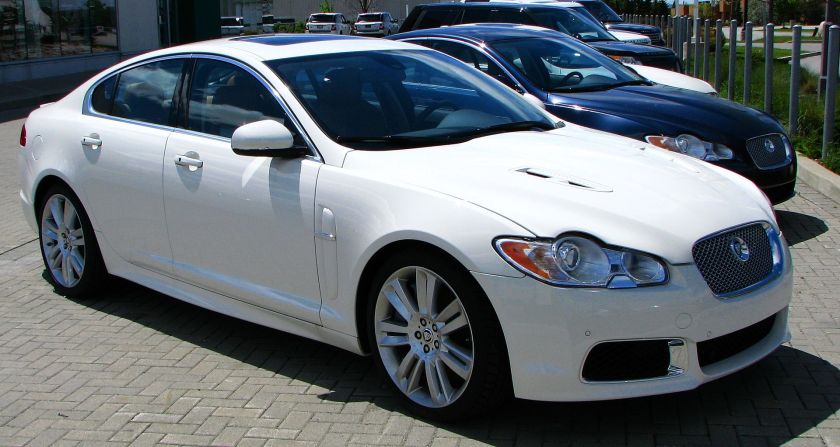
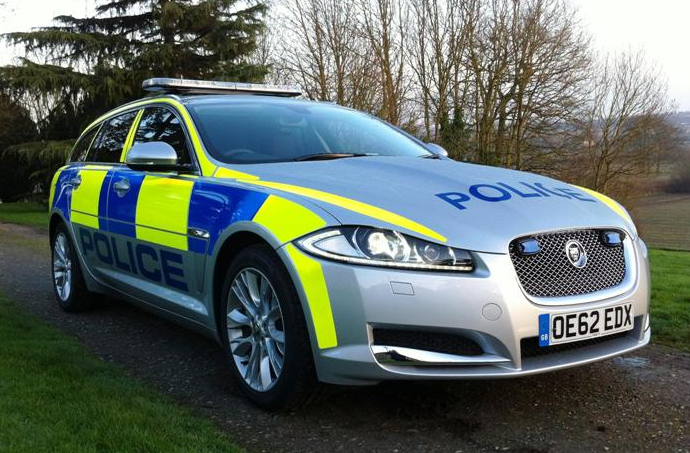
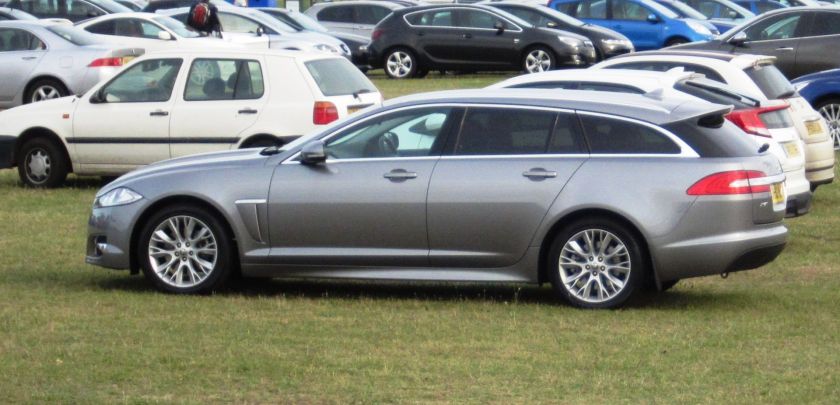



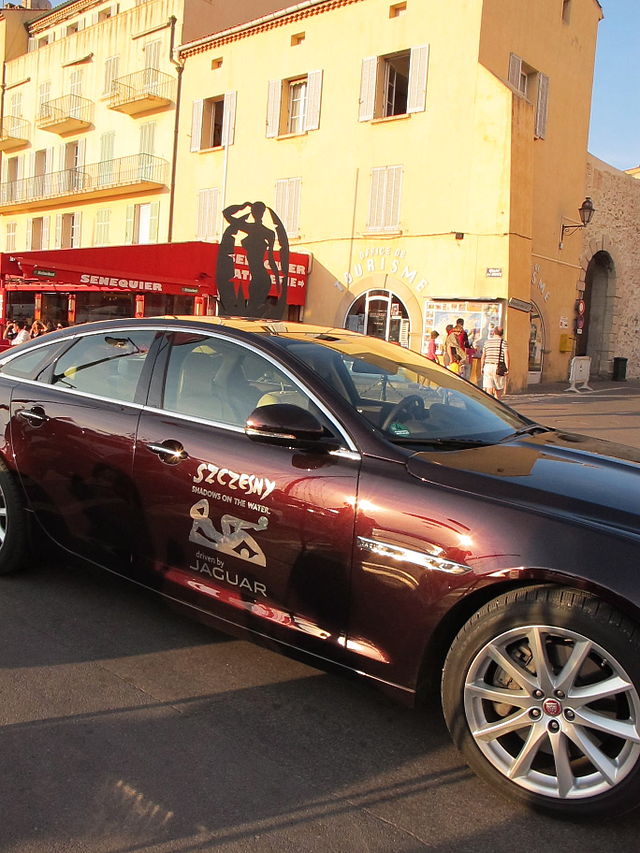
One thought on “JAGUAR Cars Whitley, Coventry, England, UK at start now from Tata Motors India II”